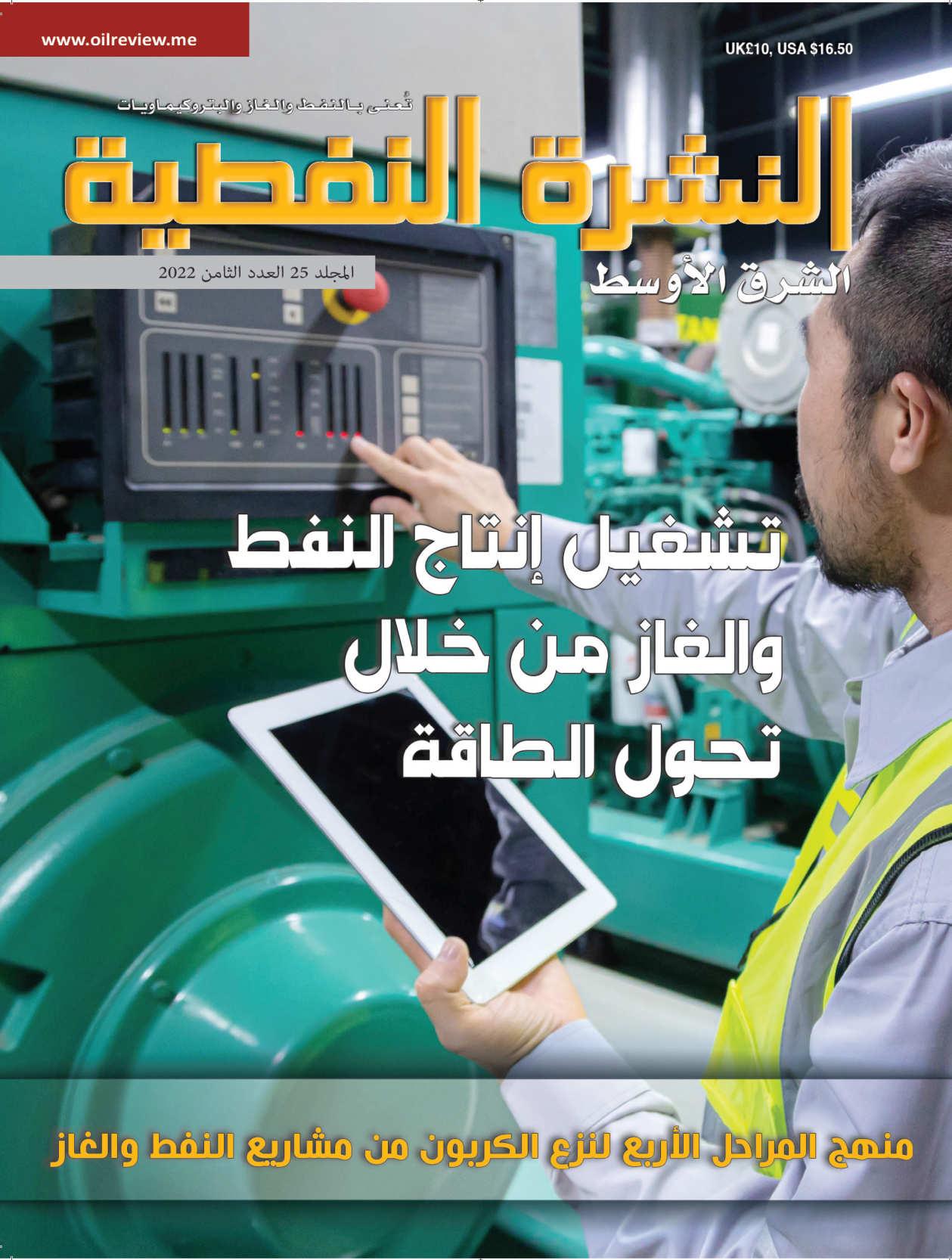



VOLUME 25 | ISSUE 8 2022 www.oilreview.me Aramco looks to the future The impact of fluctuating flow on flow measurement Tackling the cyber threat ADIPEC Review Advancing diversity & inclusion in the workforce Decarbonising operations with hydrogen Serving the regional oil & gas sector since 1997 25

Serving the world of business
Editor: Louise Waters - louise.waters@alaincharles.com
Editorial and Design team: Prashanth AP, Fyna Ashwath, Miriam Brtkova, Praveen CP, Robert Daniels, Shivani Dhruv, Matthew Hayhoe, Leah Kelly, Rahul Puthenveedu, Madhuri Ramesh, Madhurima Sengupta and Minhaj Zia
Publisher: Nick Fordham
Sales Manager: Richard Rozelaar richard.rozelaar@alaincharles.com
Magazine Sales Manager: Tanmay Mishra +91 98800 75908 tanmay.mishra@alaincharles.com
International Representatives
Nigeria Bola Olowo +234 8034349299 bola.olowo@alaincharles.com
USA Michael Tomashefsky +1 203 226 2882 +1 203 226 7447 michael.tomashefsky@alaincharles.com
Head Office: Alain Charles Publishing Ltd University House, 11-13 Lower Grosvenor Place, London, SW1W 0EX, United Kingdom +44 (0) 20 7834 7676 +44 (0) 20 7973 0076
Middle East Regional Office: Alain Charles Middle East FZ-LLC Office L2-112, Loft Office 2, Entrance B, P.O. Box 502207, Dubai Media City, UAE +971 4 448 9260, +971 4 448 9261
Production: Rinta Denil, Ranjith Ekambaram Eugenia Nelly Mendes and Infant Prakash production@alaincharles.com
Subscriptions: circulation@alaincharles.com
Chairman: Derek Fordham
Printed by: Buxton Press Printed in: December 2022 © Oil Review Middle East ISSN: 1464-9314
Editor’s note
ADIPEC 2022 SAW record global attendance of more than 160,000 visitors from 164 countries, generating an estimated US$8.2bn in business for exhibiting companies, according to the organisers. Decarbonisation was a key theme, with a first-of-its-kind Decarbonisation Zone and Conference where experts shared their views on pathways to a cleaner energy future. As always, energy companies took the opportunity to showcase their latest products and technologies. See our ADIPEC Review beginning on p22.
Aramco continues to go from strength to strength, building on its core oil and gas upstream business while diversifying its activities and adopting an increasingly global approach, not to mention heightening the focus on more sustainable operations (p12).
We also look at ways to tackle cyber threats, which are intensifying with the continuing instability in eastern Europe (p36-38).
Finally, it just remains for me to wish all our clients, readers and supporters all the very best for the holiday season, and a very happy New Year.
Diversity & Inclusion
diversity in the workforce ChampionX discusses the benefits of leading one of the most diverse teams across the region
benchmarks in diversity Emerson Automation has set diversity as one of its company goals, and scooped the ‘Oil and Gas Inclusion and Diversity Company of the Year’ award at ADIPEC
ADIPEC Review
energy, minimum emissions The leading global energy show provided a forum to map the industry’s pathway to net zero
Moving towards remote and autonomous operations
Fugro launched its Pegasus USV at ADIPEC 24 Hydrogen: reality, promise and prospects
Hydrogen was one of the pivotal fields in ADIPEC’s Decarbonisation Zone and Conference 28
Showcasing the latest solutions for sustainability
Al Masaood Group’s Industrial showcased solutions and innovative technologies for the advancement of the UAE’s energy sector at ADIPEC 29
Strengthening Malaysia’s energy ties with the Middle East
Malaysia is looking to emerge as a major energy market for the Middle East
Flow Control
34 The impact of fluctuating flow on flow measurement
Factors impacting flow stability and how the effect of unsteady flow on different measurement technologies can be addressed
Cyber Security
Addressing the cyber threat How energy companies can boost their resilience and robustness against destructive national threat actors
4 Executives’ calendar Listings of regional and international events, and previews of the World Future Energy Summit and MEOS/GEO News 7 Developments A round-up of the latest news from across the region
Calendar
Aramco Review 12 A true global heavyweight Recent outstanding financial results underscore the significance of Aramco’s oil and gas business, but the oil giant is always thinking one step ahead Saudi Arabia 15 Bringing differentiated technologies to the Middle East The expansion of TAQA’s portfolio, its differentiated product and service offering, and its energy transition initiatives
18
20
Improving
Setting
22
23
Maximum
36
Arabic 4 Analysis
Contents www.oilreview.me email: orme@alaincharles.com
Issue 8 2022 oilreview.me 3
www.europetro.com/events
FEBRUARY 2023 13-15 EGYPS CAIRO www.egyps.com 13-15 GDA Int’l Downstream Conference & Exhibition MANAMA www.gdaconference.org 19-21 MEOS GEO MANAMA www.meos-geo.com 28-2 March International Energy Week LONDON www.ieweek.co.uk
MARCH 2023
7-9 Middle East Energy DUBAI www.middleeast-energy.com 7-9 SPE/IADC Int’l Drilling Conference & Exhibition STAVANGER www.drillingconference.org
MAY 2023
2023.otcnet.org
www.omc.it.en
THE WORLD FUTURE Energy Summit, the leading business event for future energy and sustainability, takes place from 16-18 January in Abu Dhabi. Exhibition, technology showcase, investment incubator and business forum all rolled into one event, the summit convenes leaders, innovators and global thinkers to share ideas that are creating the blueprints for a sustainable future. Every year, 34,000 international visitors and buyers from 125 countries attend the show to network, unveil breakthrough technologies, experience live demos, learn the latest industry insights, develop new business partnerships, and source leadingedge products.
Six exhibitions will feature global suppliers in solar, renewable energy, water efficiency, sustainable waste management, smart cities and climate change, while five industry forums will enable participants to learn about the latest industry trends and market opportunities
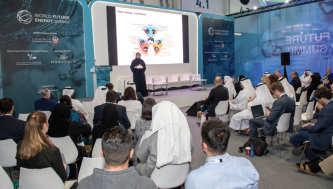
The Solar & Clean Energy Forum focuses on the dynamic, long-term shift taking place in the sector as clean energy use increases. The Forum will discuss strategies to meet energy expectations, particularly in urban areas, and the technologies that can help meet these aims. It will cover areas including
solar, energy storage, green hydrogen, hybrid power, finance and investment and minigrids.
The Water Forum will present the latest technologies and thinking to ensure water security in the water stressed regions. It will focus on new approaches to water management, mitigating water threats and innovations that will help foster clean, efficient production. Areas covered include automation and smart water, water reuse, water conservation and the water/food nexus
The inaugural Climate & Environment Forum will focus on how organisations and governments can meet their ESG (environment, social, governance) targets. It will look at methods to decarbonise industry, tackling air pollution, the role of carbon capture, novel climate-focused technologies and how such policies, approaches and
strategies can be applied in urban areas. Areas covered include decarbonisation of heavy industries, reducing air pollution, carbon capture, use and storage, sustainability cities and diversity.
The Smart Cities Forum will discuss how technology and sustainability will reshape our future interactions in cities and buildings. The Forum will look at master planning, future architectural design, mobility and the technologies to improve liveability and the efficient transport of people, goods and waste within the built environment. Topics include Leveraging AI in urban development, cyber safety for smart cities, IoT, people and data in the urban environment, 3D printing and sustainability and smart mobility.
The EcoWASTE Forum focuses on the circular economy of waste. It will look at new value chains within waste, the benefits of recycling and reduced landfill use as well as the changing approaches to dealing with waste, including drivers to reduce single-use plastic, energy from waste and new technology Topics include circular economy, minimising landfill waste, recycling and reuse, and waste-to-energy.
World Future Energy
to create blueprints for a sustainable future The event will feature five industry forums. 4 oilreview.me Issue 8 2022 Image Credit: RX Executives’
2023
For further information see the website at www.worldfutureenergysummit.com.
Summit
Calendar,
JANUARY 2023 16-18 World Future Energy Summit ABU DHABI www.worldfutureenergysummit.com 17-19 Intersec DUBAI www.intersec.ae.messefrankfurt.com 22-24 Middle East Energy & Sustainability Forum MANAMA www.europetro.com/events 25-26 Middle East Bottom of the Barrel Conference MANAMA
Calendar 2023
1-4 Offshore Technology Conference HOUSTON
23-25 OMC Med Energy Conference & Exhibition RAVENNA
Readers should verify dates and location with sponsoring organisations, as this information is sometimes subject to change.
Global security industry to gather at Intersec 2023
MORE THAN 1,000 exhibitors from 120+ countries will unite at the 24th edition of Intersec, the world's leading trade fair for safety, security, and fire protection. The show will take place at the Dubai World Trade Centre from 17-19 January, 2023, with exhibitors providing access to more than 10,000 products across the complete security value chain.

Advanced technological innovation will dominate the exhibition’s five key segments. Commercial and Perimeter Security caters to the need of governments and the private sectors, who are increasingly focused on security products and solutions such as access and border control, protective barriers, locks, access control protocols, security guards and many other techniques. Homeland Security is supported by Dubai Police and Security Industry Regulatory Agency (SIRA) and is dedicated to products and solutions for homeland security, law enforcement, airport, and aviation security.
Fire & Rescue will showcase the latest firefighting technologies, the best international standards, and practices, and is supported by the Dubai Civil Defence. Safety and Health will be divided into environmental, industrial, and public health and safety, and lastly, Cyber
Security will host cyber solutions, experts, from national leaders to public and private sector professionals, from cyber connoisseurs to advisors, hackers to responders, and cyber economists to corporate buyers.
“We anticipate up to 30,000 security, emergency response, safety and cyber security professionals attending Intersec 2023, where technological breakthroughs will take centre stage and attract an influential participant profile,” said Alex Nicholl, show director, Messe Frankfurt Middle East. “Industry experts, influencers, decision and policymakers, and distributors are uniting to explore the strategies and technologies that will govern the safety and wellbeing of future generations.”
The event takes place against a backdrop of anticipated sector growth. Research firm 6W Research forecasts the Middle East’s commercial security market will grow 16% a year until 2025 to reach US$8.4bn, while the region’s fire and safety sector will advance 7.5% annually to reach US$16.76bn by 2026.
“This huge potential has attracted a line-up of leading industry heavyweights, including Honeywell, Bosh, Hochiki, Drager and AXIS Communications,” added Nicholl.
The Intersec 2023 Conference will be a think tank for future industry strategies, with four focused segments. The conference streams will feature the Intersec Security Leaders’ Summit, and dedicated seminar streams focusing on safety and health, fire and rescue, and tackling ever-growing
sophisticated cyber security threats.
The 2023 Intersec Security Leaders’ Summit is a high-level strategic summit for the leaders and stakeholders of the security industry to collaborate, innovate and actively seek new technologies to meet the rapidly changing needs of the industry.
Tackling cybercrime
The Middle East and Africa’s cybersecurity market size was valued at US$5.92bn in 2021 and is projected to reach US$19.79bn by 2030, growing at a CAGR of 14.35% from 2022 to 2030. The Intersec Cyber security Seminars will feature the latest trends, drivers, challenges and successful case studies across industries that are playing a substantial role in shaping the cybersecurity industry growth.
“The Cyber security Seminars will provide a platform of expertise, best practices, and solutions that cater to those working in and managing cyber defence. With key themes including resilience, risk and future-tech among others, the presents a rare opportunity for industry players to network with global CTOs, CISOs, heads of cyber security, and system integrators with real purchasing power,” said Nicholl.
Intersec 2023 has the support of Dubai Police, the Directorate General of Dubai Civil Defence, The Security Industry Regulatory Agency and Dubai Municipality. n
For further information see the website at www.messefrankfurt.com
Issue 8 2022 oilreview.me 5
Security industry professionals from around the world will convene in Dubai in January to explore the strategies and advanced technologies that will futureproof global safety.
30,000
professionals attending Intersec
We anticipate up to
security, emergency response, safety and cyber security
2023.”
Intersec 2023
Around 10,000 products will be issued across the complete security value chain.
Image Credit : Messe Frankfurt
MEOS GEO to take place with the theme ‘Today’s Realities, Tomorrow’s Energy’
FROM DRONES TO cloud-based reservoir simulation modules, technological innovations in the oil and gas sector have come a long way.
The Middle East Oil, Gas & Geosciences Show (MEOS GEO) 2023 is all set to showcase the products, services and solutions that are driving mega energy projects.
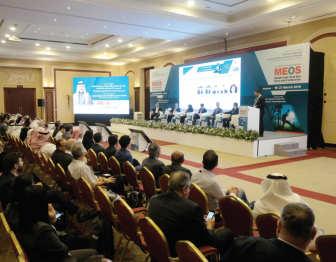
MEOS GEO is the premier upstream oil & gas and geoscience exhibition and conference in the Middle East. Hosted by the National Oil & Gas Authority and chaired by Saudi Aramco, it acts as a hub for thousands of oil and gas professionals to convene.
Running from 19-21 February 2023 in Bahrain, the event will play host to the giants of the oil & gas sector such as ADNOC, Tatweer Petroleum, KPC, PDO and Saudi Aramco, along with the technology and service companies and the start-ups that are set to transform the industry. Under the patronage of Prince Salman bin Hamad Al Khalifa, the Crown Prince and Prime Minister of the Kingdom of Bahrain, the show will feature a world-class exhibition showcasing the latest products and solutions of more than 200 exhibitors.
The theme of the conference ‘Today’s Realities, Tomorrow’s Energy’ reflects the
current landscape of the evolving industry and future solutions, where new technologies, efficiency developments, innovations, and IR 4.0 and AI implementations will be showcased.The strategic conference will feature high-level panel sessions on topics including sustainability, investments, supply chain, geopolitics, integration, 4IR, and Talent 4.0. The technical conference will feature 400+ technical presentations devoted to exploration geology and geophysics, unconventional resources, drilling and well testing, reservoir characterisation and
modelling, production and facilities, and more.
New features for 2023 include the Startup Village, featuring up-and-coming companies creating ground-breaking products and services including AI, drones and robotics, VR/AR applications and blockchain technology; and the Core Sample Display, where core samples from across the Middle East will be exhibited.
The MEOS GEO Energy Awards recognise outstanding performance in the upstream oil and gas industry across three categories: innovations and technology, transformation and organisation performance, and sustainability.
“The executive committee, technical programme committee, and organising committee have been actively working in the background in preparation for the region’s premier upstream oil, gas and geosciences event. With both MEOS and GEO combining, it is exciting to see this mega event’s scale of planning and preparations,” said Faisal Al Nughaimish, chief drilling engineer, Saudi Aramco, and conference chairman, MEOS GEO 2023.
For further information, see the website at www.meos-geo.com
CELEBRATIONS RANG THROUGH the night as the third annual OWI Awards 2022 brought industry giants together to highlight the very best in well intervention.

This year, the ceremony was hosted in Aberdeen on 25 November, 2022, and showcased a host of innovative technologies and solutions over the span of eight categories. The judging panel was made up of top operators from around the world ready to find the best of the best in well intervention.
Vaarst kicked off the night by taking home the Digital Transformation Leader trophy for their excellent work on the SubSLAM X2, a trailblazing digital solution which collects real-time 3D intelligent data. Next up were Expro who were the big winners of the night, claiming victory in two award categories; Champion Integrated Well Service Company and Most Innovative Solution. The company’s integrated subsea intervention package and Octopoda system were recognised by the judging panel for their ingenuity and impact on the outer industry,
The award for the Best Example of Collaboration went to AKOFS Offshore in the hotly contested category, for its exemplary work with Equinor, offering the AKOFS Seafarer for integrated services utilising the company’s OneTeam model. The services are provided through four entities ¬– AKOFS Offshore, IKM Subsea, Archer and Welltec – highlighting the integral prosperities of collaborative work within the industry.
Tendeka took to the top spot for the Best Project Outcome award, shining a light on the company’s remedial solution, Filtrex Conformable Sand Screen, which showed huge success restoring sand-free production across a threewell campaign in Indonesia. The remarkable performance earned Tendeka high recognition from the judging panel. As sustainability is an incredibly hot topic within the industry at the minute, the award for Environmental Sustainability Innovation presented a very strong roster, but ultimately Exceed pipped everyone to the post. The company is on a mission to be the global leader of integrated well management for energy transition, and were subsequently rewarded for their work on carbon neutral well operation.
SLB were awarded for their Plug and Abandonment Excellence thanks to its industry-first wireline service, Epilogue Isolation, wherein operators are no longer required to remove the inner pipe to evaluate well integrity, revolutionising conventional operations. The service reduces P&A rig days, minimising costs and reduces carbon footprint. To end the ceremony, the final award was that of Significant Contribution to the Industry; an award which showcases the impressive portfolios accumulated by the finalists over the span of their respective company life cycles. The winner of the prestigious award was Weatherford for their rig-less framework approach to decommissioning pre-abandoned phase 3 wells.
Overall, the ceremony was a cause for celebration not only for the winners, but for all the finalists for all the hard work and dedication each operator has put into making the well intervention industry be the best it can be.
OWI Awards 2022: showcasing the best in offshore well intervention
News
MEOS GEO will featue high-level panel sessions on the issues of the moment.
6 oilreview.me Issue 8 2022 Image credit: Informa Markets Image Credit: Offshore Network
The awards brought industry giants together to celebrate the best in well intervention.
PIPELINE TECHNOLOGY SPECIALIST STATS Group has been commissioned by UAE-headquartered oil and gas EPC contractor National Petroleum Construction Company (NPCC), a subsidiary of National Marine Dredging Company, on behalf of a National Operating Company, to provide pipeline isolation, hot tapping and plugging services to the world’s largest diameter subsea pipeline intervention project
The project is the result of STATS Group’s longterm commitment to support localisation in the Gulf region. The company employs more than 80 people and have facilities in Abu Dhabi, United Arab Emirates, Muscat, Oman, and Doha, Qatar.
The scope of work will include the hot tapping and double block and bleed isolation of multiple pipelines with diameters ranging from 42” up to 56” in the Middle East region, using STATS SureTap hot tapping machines and its patented BISEP technology.

Mark Gault, STATS Group’s general manager Middle East, said, “We believe this project to be a first in the world. As far as we are aware, there have been no other subsea intervention projects of this complexity or scale that involve subsea isolations on pipelines of 56” diameter.
“We have made a significant product development investment with three new largediameter hot tapping machines and the associated isolation assets capable of handling this unique work scope. Relatedly, we are delighted to have increased our BISEP DNV Type Approval status up to 56”.”
“This is a landmark project for STATS Group and reinforces our credentials for providing innovative subsea hot tapping and high integrity isolation solutions which can address diverse and technical challenges.

“Our strategy of putting in the hard yards in terms of investing in our asset base in the Middle East and in employing and training locally based staff has put us in a strong position to expand further in the region. We are continuing to recruit more staff, not only to support this exciting project with NPCC, but also in response to a broader increase in regional project work following the uncertainties of Covid-related lockdowns.”
VIKING COMPLETION TECHNOLOGY, a leading provider of upper completion equipment to the oil and gas industry, has announced multiple contract wins valued at more than US$7mn. The projects will see Viking deliver its full portfolio of well completion manufacture and design services to major MENA operators, further cementing its strong regional presence.
This announcement comes after a successful year for the Dubai-based company, which recently celebrated the delivery of 70 global projects, including the design, engineering, and qualification testing of its core, United Arab Emirates-made, API 11D1 packers, API 19AC equipment and API 14A safety valves.

These latest contract wins encompass Viking’s complete product portfolio of completion packers, siding side doors, landing nipples and associated completion accessories, as well as its highly regarded completion design and installation services. With scope for expansion, the contract wins comprise local operations in the UAE as well as the export of equipment and provision of services in Iraq and Oman.
Viking Completion Technology managing director, Willie Morrison, said, “These contract wins are a testament to our highly regarded preparation and installation services and our robust in-house testing and validation capabilities.
"As we enter our 26th year, we look forward to continuing to provide our leading well completion services to the global oil and gas industry. With trial wells for new technology underway in the UAE and Saudi Arabia, the potential for securing additional contracts in the near future is high, and the outlook for Viking is very positive."
The Abu Dhabi NPCC project includes pipelines ranging from 42” to 56”.
News Issue 8 2022 oilreview.me 7 Image Credit: STATS Group The Viking Completion Technology assembly and test team Image Credit : Viking Completion Technology
STATS Group take on world’s largest diameter subsea pipeline intervention scope Viking Completion Technology wins
multi-million-dollar contract


QatarEnergy signs long-term LNG SPAs with ConocoPhillips
QATARENERGY
ANNOUNCED
THE signing of two long-term LNG sale and purchase agreements (SPAs) with ConocoPhillips affiliates for the delivery of up to 2mn tons pa of LNG from Qatar to Germany.

bp to explore two blocks offshore Egypt
BP HAS BEEN awarded two exploration blocks in the Mediterranean Sea, offshore Egypt by the Egyptian Natural Gas Holding Company.
The Northwest Abu Qir Offshore Area - in which bp, the operator, holds 82.75% and Wintershall-Dea holds 17.25% - is located west of the recently awarded North King Mariout block (bp 100%) and north of the Raven field. It covers an area of approximately 1038 sq km with water depths ranging between 600 m and 1600 m.

The SPAs allow the delivery of upto 2 mn tons pa of LNG.
Pursuant to the two SPAs, a ConocoPhillips wholly owned subsidiary will purchase the agreed quantities to be delivered ex-ship to the German LNG receiving terminal, which is currently under development in Brunsbüttel in northern Germany, with deliveries expected to start in 2026. The LNG volumes will be sourced from the two joint ventures between QatarEnergy and ConocoPhillips that hold interests in Qatar’s North Field East (NFE) and North Field South (NFS) projects.
The SPAs were signed by Saad Sherida Al-Kaabi, the Minister of State for Energy Affairs, the president and CEO of QatarEnergy, and Ryan Lance, the chairman and CEO of ConocoPhillips.
Al-Kaabi said, “These agreements are momentous for several reasons. They mark the first ever long-term LNG supply to Germany with a supply period that extends for at least 15 years, thus contributing to Germany’s long-term energy security.”
Lance said, “These agreements will provide an attractive LNG offtake solution for our new joint ventures with QatarEnergy and position the joint ventures as reliable sources of LNG supply into Europe.”
“These agreements will provide an attractive LNG offtake solution for our new joint ventures with QatarEnergy and position the joint ventures as reliable sources of LNG supply into Europe,” he added.
ConocoPhillips’ partnership is made up of a 3.125% share in the NFE project and a 6.25% share in the NFS project, which are planned to commence production in 2026 and 2027, respectively.
PETROFAC HAS BEEN selected by Shell to undertake new engineering and procurement services (EPS) scopes in Oman.

The first is a five-year EPS contract for Shell’s Block-10 Mabrouk Phase-2 Project, located in the Al Wusta Governate of Oman – around 400 km from Muscat. The scope of the contract includes well-pads for multiple wells, remote manifold stations and connecting pipeline, including water infrastructure for well development and a Field Operations Base.
Two further contracts, to provide residual engineering and procurement services to complete Phase-1B of the Block-10 development, were secured under Petrofac’s global Enterprise Framework Agreement with Shell.
The contracts will be delivered in-country utilising Petrofac’s multi-discipline engineering and project execution office in Muscat. Petrofac has been supporting Oman’s energy industries since 1988 to design, build, operate, and maintain facilities, as well as developing local workforce competence and generating in-country value.
Shell Integrated Gas Oman BV, a subsidiary of Shell plc, along with its partners, OQ and Marsa Liquefied Natural Gas, signed a concession agreement to develop and produce natural gas from Block10 in December 2021. Shell became operator of the field at the signing.
The Bellatrix-Seti East block - in which bp and Eni, the operator, each hold a 50% share - is located west of the Atoll field and North Tabya blocks. It covers an area of approximately 3440 sq km with water depths ranging between 100 m and 1200 m.
Anja-Isabel Dotzenrath, bp’s executive VP for gas and low carbon energy said, “Egypt has long been important for bp with almost 60 years of successful partnership and more than US$35bn invested. We now look forward to an even more successful future, continuing to help meet Egypt’s growing energy needs by providing cost-competitive supplies of gas and supporting Egypt through the energy transition by exploring growth opportunities in hydrogen for example.”
Karim Alaa, bp’s regional president, Egypt, Algeria, and Libya, added, “We have been awarded four new exploration blocks and a block extension in 2022 which offer the potential for gas discoveries that could be developed using existing infrastructure. Acquiring this acreage is part of our strategy to maintain a longer-term plateau production rate.”
In addition to the two new blocks, in 2022 bp was also awarded: King Mariout Offshore Area (100% bp), North El Fayrouz offshore area (50% bp and 50% Eni, the operator) and the North El Tabya area extension (100% bp).
News
The two blocks are NW Abu Qir and B-S East.
10 oilreview.me Issue 8 2022
Image
Image
The contracts will be delivered in-country utilising Petrofac’s Muscat office.
Caption: QatarEnergy
credit: bp
credit: Petrofac
Shell to employ Petrofac’s EPS services in Oman
Number of contracts drops, but value increases - GlobalData
THE OVERALL NUMBER of contracts in the oil and gas industry declined by 7% in Q3 2022, according to the latest research from GlobalData, decreasing from 1,662 in Q2 2022 to 1,542 in Q3 2022. However, the contract value reported an increase, from US$38.8bn in Q2 2022 to US$47.7bn in Q3, with ADNOC Drilling high on the list.

Operation and Maintenance (O&M) represented 53% of the total contracts in Q3 2022, followed by procurement scope, with 24%, and contracts with multiple scopes, such as construction, design and engineering, installation, O&M, and procurement, accounting for 12%.
Notable contracts were Keppel Shipyard’s EPC contracts worth US$8.76bn for FPSO in Brazil, and ADNOC Drilling’s two contracts worth a combined US$3.4bn, as well as five significant framework agreements with majors such as Schlumberger, Halliburton, Weatherford, Al Ghaith Oilfield and Al Mansoori Directional Drilling. China Merchants Energy Shipping also registered a US$1.81bn charter contract from Sinochem Petroleum Shipping Singapore for three 175,000 cu m. capacity LNG vessels.
Penspen launches Energy Transition Consultancy
GLOBAL ENERGY SERVICES company Penspen has launched a dedicated Energy Transition Consultancy to help the energy industry reduce emissions and advise clients on low carbon-related opportunities from a project financing and development, regulatory and infrastructure standpoint.
It is built around four pillars of expertise: building new hydrogen & CO2 infrastructure, the repurposing of existing infrastructure for the energy transition, operating with hydrogen & CO2, and maintaining infrastructure to maximise its lifecycle. The company’s work spans a range of services, including engineering & project management, asset integrity, asset management, digital services, alongside its Centre of Engineering Excellence.

Penspen CEO, Peter O’Sullivan, said, “Penspen have launched this consultancy in response to an increased focus on low carbon fuels such as hydrogen across the energy industry and to address the need to overcome the global dependence on fossil fuels. We believe a key factor in reducing hard to abate sources of carbon emissions, such as domestic heating, industrial heating and heavy vehicle transportation, will be the ability to reuse existing infrastructure, at least initially.
“Our focus is to improve access to sustainable energy for communities worldwide. We face several challenges in doing that, whether related to the wider economy or to the scale of the investment in the energy sector required. The teams that make up our Energy Transition Consultancy have the broad range of skills required to help our clients navigate the challenges that lie ahead and achieve the goal of net zero emissions, no matter their location or stage on their decarbonisation journey.”
ADNOC Drilling won major contracts in Q3.
News Issue 8 2022 oilreview.me 11
Image Credit: Adobe Stock
global heavyweight
REPORTING ITS Q3 earnings for 2022 recently, Saudi Aramco announced net income of US$42.4bn, a massive hike from US$30.4bn in the same period a year earlier. The huge increase reflects higher global energy prices as well as Aramco’s own long-term competitive low-cost production advantage and vast resources base.
“Aramco’s strong earnings and record free cash flow in the third quarter reinforce our proven ability to generate significant value through our low-cost, lower-carbon intensity upstream production and strategically integrated upstream and downstream businesses,” commented Amin H. Nasser, president and chief executive, Aramco.
Aramco’s current total oil production capacity stands at around 12mn barrels per day (bpd), though it has set in place a roster of projects to maintain and lift both this and its natural gas output significantly. Its current crop of expansion projects includes Haradh, Hawiyah, Damman, plus the offshore Marjan and Berri fields.
At the same time, there is also a recognition of the need to transition onto a more sustainable footing going forward.
“We are extending our long-term oil and gas production capabilities while also working towards our previously stated ambition to achieve net-zero…greenhouse gas emissions from our wholly-owned operated assets,” added Nasser.
Robust supply chain
Saudi Aramco is navigating other unsettled waters too, including potential disruptions to the global supply chain arising from economic and political upheaval around the world.
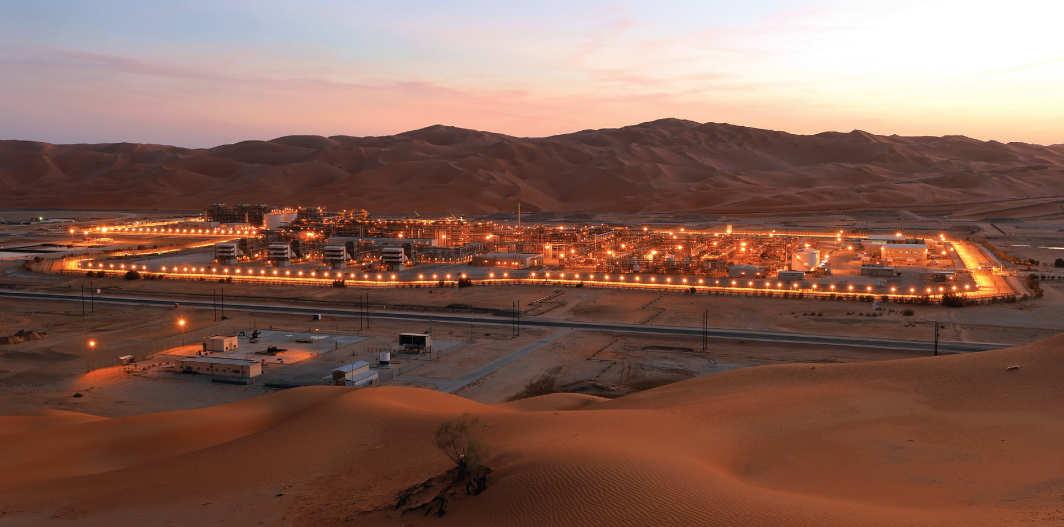
The company has just signed 59 corporate procurement agreements (CPAs) with dozens of local and global manufacturers to help underpin its own supply chain, as well as step up the development of materials manufacturing facilities within the Kingdom — another key strategic Saudi objective. The agreements, valued at US$11bn, have the potential to create 5,000 new jobs in the country over the next decade.
The 59 CPAs cover things such as drilling chemicals, wellheads, switchgears, vibration monitoring systems, pipes, compressors, structure steel, fittings and flanges and air-cooled heat exchangers. Companies to sign agreements include Baker Hughes, Halliburton, SLB, TechnipFMC and Cameron Al Rushaid.
Ahmad A. Al-Sa’adi, Aramco's senior vice president of technical
Aramco’s current total oil production capacity stands at around 12mn bpd.
Recent outstanding financial results underscore the significance of its core oil and gas business, but Saudi Aramco is always thinking one step ahead. Martin Clark reports.
Saudi Aramco: a true
Aramco Review 12 oilreview.me Issue 8 2022
The agreements have the potential to create 5,000 new jobs over the next decade.”
Image Credit : Aramco
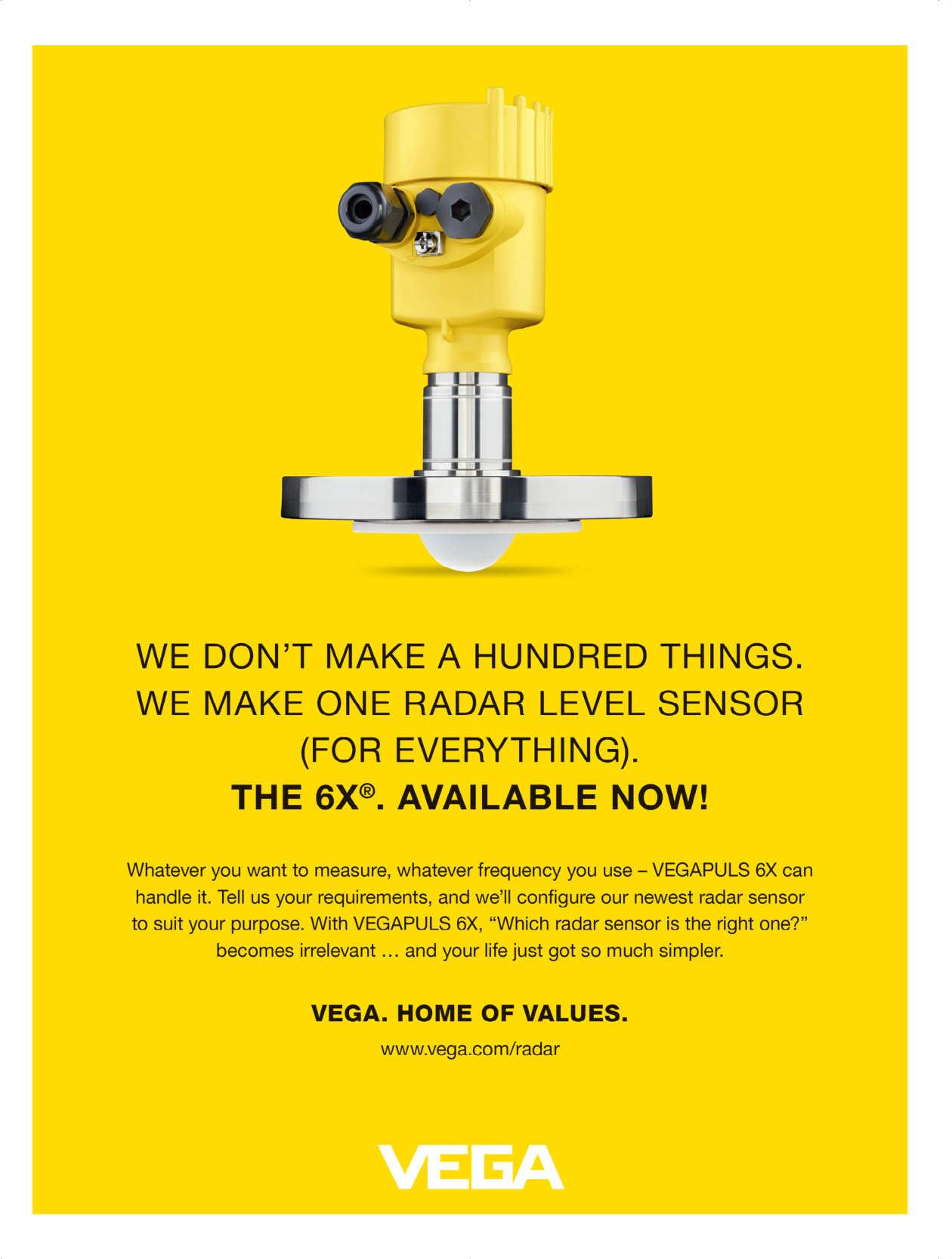
services, said the move strengthens the group’s supply chain, connecting it with many of the industry’s largest and best-known names.
“Our significant investments in a network of accomplished local suppliers strengthens Aramco’s resilience, ensuring that we remain the world’s most reliable energy company,” he remarked.
“We are also extensively building commercial ecosystems globally by partnering with some of the world’s top energy, logistics, and manufacturing companies.”
Downstream investment drive
Saudi Aramco is likewise continuing to advance its downstream expertise simultaneously in a bid to add value to its resources exports.
This includes the roll-out of both domestic projects, including refineries and petrochemicals plants, to growing international ambitions.
In November, the company announced its biggest ever investment in South Korea, to develop one of the world’s largest refinery-integrated petrochemical steam crackers through its S-OIL affiliate. The US$7bn Shaheen project aims to convert crude oil into petrochemical feedstock and represents the first commercialisation of Aramco and Lummus Technology’s TC2C thermal crude to chemicals technology, which increases chemical yield and reduces operating costs. It follows an earlier US$4bn investment into the first phase of the petrochemical expansion completed in 2018, and fits within the group’s strategy to maximise the ‘crude-to-chemicals’ value chain.
According to Nasser, the group will similarly play a strategic role in meeting rising global demand for advanced and refined products in the coming years.
“The global petrochemical landscape is rapidly evolving with demand growth anticipated to accelerate, driven in part by rising
consumption from Asia’s emerging economies,” he said when announcing the S-OIL project. S-Oil’s Shaheen venture is well positioned to meet rising demand from across the high-growth Asia region, he noted. It is also a further showcase for Aramco’s knowledge, innovation and entrepreneurial side.
“By further integrating refining and chemical processes through the first commercialisation of Aramco’s thermal crude-to-chemicals technology, we aim to create a more efficient, competitive and sustainable platform for growth, while paving the way for further downstream expansion.”

Sustainability strategy
Despite the firm commitment to grow its traditional oil and gas business, and advance its value added strategy through the downstream sector, Aramco remains committed to improving its longterm environmental credentials. As Saudi Arabia’s flagship company, this is a matter of priority for the Kingdom’s rulers.
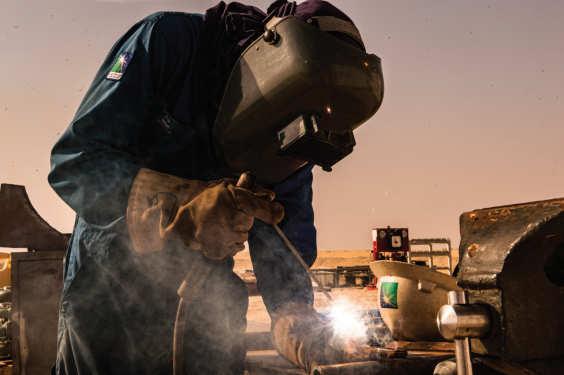
Nasser said the the move into advanced downstream projects and technology dovetails with its sustainability drive, with new products created to satisfy demand from low carbon and other emerging industries.
“Our plans for our downstream expansion continue to move forward as we seek to leverage the significant potential of our products to meet rising global demand for petrochemicals, which will be critical to the materials transition that is required to support a lower-carbon future,” he added.
“In addition, we continue to develop new, lower-carbon energy solutions as we work to be part of a more practical, stable and inclusive energy transition.”
That includes the creation of a new US$1.5bn Sustainability Fund to invest in technology that can support a stable and inclusive energy transition. It will be among the largest sustainability-focused venture capital funds globally, and managed by Aramco Ventures, the group’s venture capital arm. The fund plans to invest in technologies worldwide that support the company’s announced net-zero 2050 ambition in its wholly-owned operational assets, as well as the development of new lower-carbon fuels. Initial focus areas include carbon capture and storage, greenhouse gas emissions, energy efficiency, nature-based climate solutions, digital sustainability, hydrogen, ammonia and synthetic fuels.
Investing in technology is a key part of the group’s evolution too, both in terms of sustainability and in nurturing the hybrid energy company of the future. Aramco and IBM recently announced plans to establish an Innovation Hub in Riyadh in support of high-tech and emerging technologies in hybrid cloud, artificial intelligence, and quantum computing. The goal is to address objectives including the circular economy, materials science, supply chains, sustainability, security, and digitisation. n
Aramco Review 14 oilreview.me Issue 8 2022
An onshore rig added to Saudi Aramco’s owned rig programme.
Image Credit: Aramco
Bringing differentiated technologies to the Middle East
SAUDI ARABIA’S INDUSTRIALIZATION
Energy Services Company (TAQA), launched a new brand and strategy in 2021, structured around three pillars: business growth; creating differentiation through digital and innovation; and transitioning into a sustainable future. Since the launch of its strategy, key strategic objectives have been realised through portfolio optimisation, expanding the well services offering through the acquisition of key technology companies, the award of major contracts and global expansion.
Dr Mario Ruscev, who is responsible for developing the technology portfolio, comments that TAQA has made significant progress in terms of providing a differentiated offering of products and services, with a focus
on cutting edge technology.
Rather than trying to be all things to all people, TAQA is focusing its efforts on well services – encompassing drilling, cementing and completion – and intervention.

“These are the domains where we want to grow and start making a difference in the
region,” says Dr Ruscev. “What we are looking to do is bring to the region a high level of drilling and intervention capacity with a totally new set of tools. In the completion domain, we have strengthened our position with the acquisition of Tendeka. And we have a couple of projects and products coming up which will really enable us to get to the next level with that, going towards the management of a well or reservoir from a cell phone or at a touch, as we call it.”
Most recently TAQA entered into an agreement to acquire Al Mansoori Petroleum Services, which will add complementary products and services to TAQA’s portfolio and enable it to expand its well services business from Saudi Arabia to the wider MENA region.
Dr. Mario Ruscev, Chief Technology Officer,
speaks to
Oil
Review
Middle East about the expansion of TAQA’s technology portfolio, its differentiated product and service offering and its energy transition initiatives.
“This will give us the infrastructure and
We are starting to use real artificial intelligence applications that will take us one level up in speed and reliability.”
Saudi Arabia Issue 8 2022 oilreview.me 15
TAQA is focusing its offering on well services and intervention.
Image
Credit : TAQA
coverage we need to enable us to fully deploy the technologies we want to bring in at the regional scale. It’s a natural continuation of our strategy,” comments Dr. Ruscev.
Differentiated technologies
“We’re quite a unique animal,” he continues, underlining the company’s efforts to push the boundaries with cutting edge technologies. “We are now developing new technology to go at the bottom of coiled tubing, to be able to do things that have never been done before. We have developed a bunch of technologies which are very unique. We’re not just a service company; we are bringing what might be described as some really cool stuff. That’s what differentiates us.”
TAQA plans to expand its innovation capabilities by constructing its Innovation Centre in Dhahran Techno Valley, which will be the hub for managing TAQA’s AI and analytics programmes.
“We are starting to use real artificial intelligence applications that will take us one level up in speed and reliability.
“Typically, we use AI for specific applications, asking ourselves what is it that I can improve by using AI? What results do I want to get?”
He gives an example relating to cementing.

“Before you inject cement in a well, you need to optimise the formula, which normally involves going back and forth to the lab for several days to test it and change the parameters until you get it right. This is a typical application where we developed a smaller AI phase, bringing together our experts in cementing with chemists and mathematicians to develop a set of algorithms. Now, the cementing engineer gives the system information about the well and the performance he wants from it, presses a button and immediately gets an optimised formula for it. The results are very consistent, with the success ratio well above 95%, and it saves a lot of time. It’s not a big piece of software; the engineer will still use his normal software, with this addiction to get the optimised formula. So you can implement this knowledge into your process, and make it better.
“This is the kind of thing you can do with AI. It’s not a big revolution, it’s a series of small revolutions. If you do that a few dozen times with a few dozen applications, then you start having a real revolution on your hands.”
The region has always been very receptive to new technology, Dr Ruscev comments. “If we have something that offers some differentiation and adds value, whether it’s in terms of better productivity, lower costs, enhancing reservoir life, it will always be well received in the region,” he says, adding that if it is produced locally it is a plus.
On the localisation theme, he remarks that while this has been an increasing focus throughout the region and is enshrined in policy, it also makes good business sense.
these plans in implementation involve original manufacture. We’re not talking about assembly, it's real manufacturing.
“This makes sense. Saudi Arabia has a very large population of young people. We are situated next to a big university, and there are a number of other universities providing a wonderful pool of well-trained people, who are willing to work and like what we do. So why should we import people? Policy is helping, but even without that we would still do it, because it makes sense and the region is coming to maturity. Things that would not have been possible or would have been much more complicated 30 years ago, are now very possible. And we have to take advantage of that.”
Sustainability initiatives
One of the pillars of TAQA’s new strategy is transitioning to a sustainable future through embracing the national and global commitment to Environment, Social and Governance (ESG).
In this regard, Dr Ruscev says that the company is pursuing two initiatives in particular, capitalising on its areas of expertise, which have the potential to really make a difference. One of these is geothermal energy.
“Saudi Arabia has been putting a lot of effort in the last year to 18 months to putting geothermal energy back on the map in the kingdom, and we’ll be making some announcements on this,” says Dr Ruscev , pointing out that the Kingdom sits on a big fault line. “It’s along this geological event that you find a lot of hot rock, and huge source of calories, which can be transformed into energy for air conditioning, desalination, etc.” TAQA is working with key stakeholders in the Kingdom to drive development in this market.
“The other area where we have been pushing very strongly is carbon sequestration,” he continues, noting the company’s expertise in the sub-surface. “With our own knowledge, and through strategic alliances, we're trying to move this forward in the Kingdom and throughout the region, and to expand its use in the various different industries. The region is now pushing to develop these technologies and ensure they are successful. And then we will be able to see millions of tons of CO2 disappearing from the atmosphere.”
Having been involved in carbon capture and sequestration for around 20 years, Dr Ruscev is gratified that this is finally starting to be seen as an acceptable means of decarbonisation. He points out the region has been gifted by nature with an abundance of hydrocarbons, but there are ways to produce them in a cleaner way.
He adds that, while TAQA does its part to reduce its own carbon footprint, “the biggest impact that we can have, is being very successful in these two initiatives.” n
“Being a Saudi company, we have put a lot of emphasis on being Saudi first. Now we are expanding into the region, and we have a lot of plans for new technology, involving manufacturing over the long term. And a lot of
Dr. Mario Ruscev, Chief Technology Officer, TAQA.
Saudi Arabia 16 oilreview.me Issue 8 2022
The biggest impact we can have, is being very successful in these two initiatives.”
Image Credit : TAQA

Improving diversity in the workforce
ACROSS MUCH OF the Middle East, discussions about the need for businesses to take a proactive approach to developing a more equitable, diverse and inclusive workforce are gaining momentum.
There is growing awareness that this makes sound business sense, and companies which build diversity and inclusion into their culture are reaping the benefits, ranging from better business performance and improved customer service to an increased bottom line.
ChampionX Corporation, a global leader in chemistry solutions and highly engineered equipment and technologies for oil and gas, has had a presence in the Middle East for decades. In recent years, it has seen its district team in Oman and Qatar develop into one of the most diverse workforces across the region. Across the two countries, the 15strong team of six women and men comprises nine nationalities from four continents who between them speak six languages.
“I think our team is pretty unique across the region,” says Andrew Paul. “In addition to the variety of nationalities, we represent a range of ages, cultures, and religions. Our differences have never been an issue. In fact, many strong and enduring friendships have been forged across the team. We respect each other’s beliefs and have an understanding that we come from different backgrounds and cultures, so we may have different ways of doing things.”
He says diversity has been good for business by giving the team a more balanced approach. Everyone’s different backgrounds and viewpoints have brought forward new ways of thinking and problem solving.
“Since the team formed, our business results have improved and are very strong,” says Paul. “We’ve expanded our business in my districts through growth across existing and new major contracts.”
Paul, originally from Scotland, moved to Qatar to head up the small team there, and his role quickly expanded to include Oman as well. At that time, the teams were not very diverse. Over the past four years however, the team has grown, and so too has the diversity. The change has come about naturally, sparked by the business decision of picking the best person for the job, irrespective of gender, nationality or cultural background.
That decision led to the first woman joining the Qatar team when Jenna Jenan, a Libyan American chemical engineering graduate, was appointed as a district sales representative.
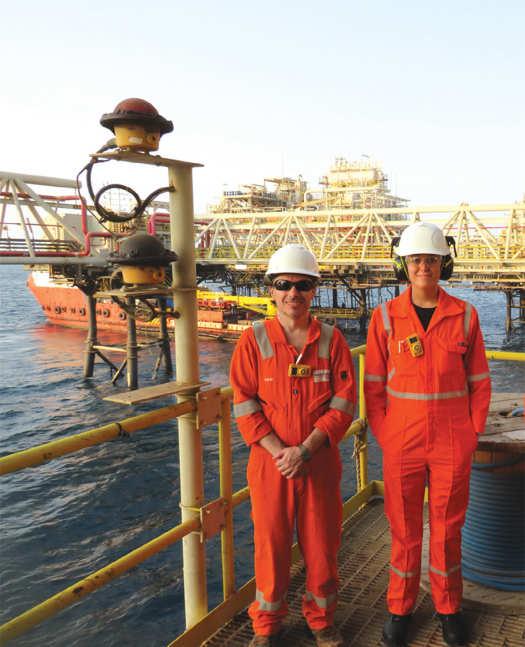
“There was no conscious decision to specifically hire a woman for the position,” says Paul. “Jenna was the standout candidate of everyone we interviewed. Hiring Jenna immediately changed the dynamics of the whole team because it added an extra, completely different element to our Qatar team that wasn’t there before.” It also led to another first, when Jenna became the first woman in more than 30 years to set foot on an offshore installation in the MENA region.
The people and companies which ChampionX works with are always open to norms being challenged, and through discussion and problem solving it collectively found a way forward, to implement changes, within the company and in the MENA region.
In the end, the trip offshore was conducted safely, executed as planned, and was very well received. “We’re making changes in areas where we haven’t been able to before,” Paul says. “To me, it’s key that we continue to push the boundaries and challenge the norm so that all the members of my team have a chance to grow and develop their skills.”
Another diversity challenge that the team have tackled is the task of putting young engineers in positions where they are managing or supervising older members of the team.
“With the right approach, even that barrier can be overcome, and we find our young engineers are successfully earning the respect of everyone they work with because of how well they do the job,” Paul remarks. “It’s been really gratifying to see how people’s mindsets have changed once they’ve worked with someone who comes from a different background. The team are now able to demonstrate to others what good looks like and what differences can be made when building a well-rounded, diverse team. Equity and inclusion can and does happen, and we’re a living example that it’s happening.” n
Jenna Jenan (right) with Steve Dowling, lead chemist at ChampionX.
Andrew Paul, district manager in Qatar and Oman for ChampionX, talks about the benefits of leading one of the most diverse teams across the region.
Diversity & Inclusion 18 oilreview.me Issue 8 2022
Image Credit: ChampionX

Setting benchmarks in diversity
EMERSON AUTOMATION IS focusing heavily on increasing diversity within its workforce. In fact, at the ADIPEC 2022 Awards, Emerson was named the 'Oil and Gas Inclusion and Diversity Company of the Year,’ a recognition given to the company for its efforts to drive diversity, equity and inclusion in the industry. The award recognises the top company in the energy industry that promotes, delivers and embeds inclusion and diversity into its business strategy, creating a work environment that is equitable, diverse and inclusive for all employees.

“We got shortlisted as one of three for the Inclusion and Diversity awards at ADIPEC 2022, and we emerged as the winners in that category. Diversity, equity and inclusion at Emerson has been a journey for over five years now, where it’s driven globally, but it’s what we did locally that differentiated us and gave us the advantage to win the award,” said Haddad.
Haddad said that they need to deliberately work on bringing diversity into the work space, because “in the male dominated industry that we are in, if we leave it to an organic way of increasing diversity, it may never happen.” This is mainly because there are not many women already in the industry. According to research from Boston Consulting Group and the World Petroleum Council, women accounted for only 22% of employees in the oil and gas industry globally in 2020.
There are different components in the chain that are needed in order to increase diversity, said Haddad, with acquiring candidates being the first step. Here,
Emerson’s HR team is tasked with creating a diverse slate of candidates they pool in. Secondly, it is also important that the panel which interviews candidates is also made up of a diverse group of people.
“We want that diversity in the judging element and in the pool of talent that we bring in,” explained Haddad. “We have several mentorship programmes. We have programmes that take women and show them the different aspects of the business, so they get to see what finance, marketing, sales, and operations are, regardless of what their job is, so that they realise that they have different opportunities.”
Haddad commented that this encourages women to believe that they will never be boxed into one profession if they choose to change.
In addition to one-on-one mentorship to keep women encouraged, Emerson also makes sure to promote and position women
in senior leadership positions. The company has increased the participation of women in its Middle East and Africa leadership, with the goal to double the representation of women globally at this level by 2030.
“A lot of the time companies manage to pull in women and develop their talent, but they never get promoted,” commented Haddad. This advocacy is important as well for bringing confidence into an organisation to make them believe that women can be put into leadership roles.
Emerson’s Diversity, Equity & Inclusion Council, as well as the development of a DEI roadmap, has been critical in making impactful strides in fostering a culture of inclusion. Additionally, Emerson has encouraged and supported the establishment of various Employee Resource Groups (ERG) to facilitate the networking of employees and promote awareness of underrepresented communities. n
Emerson lifted the ‘Oil and Gas Inclusion and Diversity Company of the Year’ award at ADIPEC 2022.
Emerson Automation has set diversity as one of its major company goals, said Widad Haddad, the company’s vice president & general manager for United Arab Emirates, Oman, Yemen & Lebanon, in an exclusive interview with Oil Review
Middle East at ADIPEC.
Diversity & Inclusion 20 oilreview.me Issue 8 2022
If we leave it to an organic way of increasing diversity, it may never happen.”
Image Credit : Emerson Automation Solutions

Maximum
minimum emissions
TAKING PLACE FROM 31 October-3 November, the week before COP27, ADIPEC’s strategic conference sessions helped shape climate discussions, as the leading voices from the energy industry tackled issues at the heart of the sector, with a strong focus on the energy trilemma of sustainability, affordability, and security of supply.
In his opening keynote address, UAE Minister of Industry and Advanced Technology, managing director and group CEO of ADNOC, His Excellency Dr. Sultan Al Jaber, set the theme for the following four days of the conference and exhibition stating, “The world needs maximum energy, minimum emissions.”
How the sector could achieve this was discussed across a range of high-level ministerial panels attended by the UAE’s Minister of Energy and Infrastructure, His Excellency Suhail Mohammed Al Mazrouei, Saudi Arabia’s Minister of Energy, Prince Abdulaziz bin Salman al-Saud, US senior advisor for Energy Security, Amos Hochstein, Egyptian Energy Minister, Tarek El Molla, and India’s Minister of Petroleum and Natural Gas, Hardeep Singh Puri.
ADIPEC 2022 featured more than 28 country pavilions, facilitating international cooperation, including the signature of a historic new deal between the UAE and the USA. UAE Minister of Industry and Advanced Technology and special envoy for Climate Change HE Dr Sultan Al Jaber, and US special presidential coordinator Amos Hochstein, signed the Partnership for Accelerating Clean Energy (PACE), which will catalyse US$100bn of investment in renewable energies and clean technologies in the US, UAE, and emerging economies around the world by 2035.
Tayba Al Hashemi, chair of ADIPEC 2022 and CEO of ADNOC Sour Gas, said, “The best minds from across the energy sector convened in Abu Dhabi this week to focus their efforts on developing a new, bold, realistic, and pragmatic energy transition pathway that benefits humanity, the climate, and the
economy. With the COP27 meeting in Sharm El-Sheikh, and as the UAE prepares to host COP28 next year, the ideas we have discussed, the solutions we have explored, and the commitments we have made at ADIPEC 2022 will help advance an energy future that is secure, affordable and sustainable.”
The technology and challenges around decarbonisation were at the heart of ADIPEC 2022. The new Decarbonisation Zone enabled energy leaders to explore the latest lowcarbon technologies and to showcase the work that the industry is doing to accelerate the transition to low-carbon emissions.
Christopher
ADIPEC 2022, said, “ADIPEC 2022 has shown the world that it is so much more than a hydrocarbon show. It is the leading strategic platform for energy and technology that provides the industry with a platform to demonstrate the fundamental role that it will play in the transition to Net Zero.

“It is important to acknowledge that the energy transition looks different in different markets. A successful energy transition cannot happen without key industry players from these markets having the opportunity to come together and agree a path forward that ensures populations across the world have access to safe, reliable, and sustainable sources of energy. ADIPEC is proud to enable this.
“At a time when energy is at the top of the global agenda, ADIPEC has laid the groundwork for the discussions that will be had, decisions that will be taken and partnerships that will be formed, and not just at COP27, but for the next year of industry discussions.” n
Hudson, president of dmg events, organisers of
ADIPEC witnessed record attendance this year.
ADIPEC 2022, the leading global energy conference and exhibition, witnessed record attendance of 160,549 energy professionals from more than 160 countries who gathered in Abu Dhabi to participate in one of the most important events in the energy calendar.
energy,
ADIPEC Review 22 oilreview.me Issue 8 2022
ADIPEC 2022 has shown the world that it is so much more than a hydrocarbons show.”
Image Credit: dmg events
Moving towards remote and autonomous operations
Fugro took the opportunity at ADIPEC to launch its Fugro Pegasus USV (uncrewed surface vessel), and share the benefits of remote and autonomous solutions. Ross Macfarlane, remote operations programme manager at Fugro, spoke to Oil Review Middle East about prospects in the region.
THE CLASS-BUILT 12 m USV, the first in the region, was operated live from Fugro’s booth, thus “proving the technology works and is real… it’s current technology, not an idea or future technology,” Macfarlane says.

Participating in the show had been very beneficial in convincing visitors of the technology’s potential, he comments, adding, “The introduction of this breakthrough technology is really exciting... this region in particular is very open to new technologies, wants to do things better and to have the most up to date and innovative solutions available. We’re looking to install this technology globally, and the UAE has proved to be one of the most accepting regions in actively supporting us to get it functioning. It’s groundbreaking and revolutionary for the industries here.” He adds that the weather and sea conditions in the region are also very amenable.
Macfarlane highlights the significant benefits of remote operations in terms of sustainability, safety and efficiency, pointing out that using a lighter uncrewed vessel can reduce carbon emissions by up to 95% compared with conventionally crewed vessels because of its relatively small size and the way it operates. “That’s a massive environmental benefit.” It is certainly something that will resonate in the UAE, with its net zero ambitions.
“There’s also the safety aspect; we’re removing people from the offshore environment, so that’s an improvement straight away, as working offshore in harsh environments is one of the main causes of accidents in the industry,” he points out.
“We’re the first USV operators to launch and recover an ROV remotely, and ours is capable of going up to 400 m depth, so the scope of work we can cover is very wide, ranging from Hydrographic survey to close inspection for pipelines and subsea infrastructure,” he continues.
“If there’s a gas leak in a pipeline for example, you can send the unmanned vessel to investigate it without direct risk to human life. There are safety elements on board as well; there are multiple communication systems and smart systems for the maintenance of control.”
In terms of operational efficiency, the USV revolutionises the way operations are carried out, Macfarlane adds.
“The vessel can run 24/7, constantly gathering data, so the volume of data which we can pass on to the client is going to increase, enabling them to get better insights into their assets,” explains Macfarlane. This will offer benefits in terms of predictive and preventive maintenance, potentially resulting in significant cost savings.
Expanding on the benefits of remote operations more widely, Macfarlane says, “Our ambition is for anyone who sits in front of a computer screen to do it from the shore, thus reducing the numbers offshore. Even in conventional vessels we’re reducing the crew on board and bringing them into the operations centre, for remote surveying, remote rig positioning etc.”
Discussing the impact of remote operations on the workforce, Macfarlane comments, “It’s a transition and evolution of the workforce, representing a relocation, not a reduction in numbers. The people are really key to making it work.
“We have been developing training courses to make sure we have a robust programme. Going forward, we are looking to introduce apprenticeships and new ways into the workforce, as job roles are going to change; we need to ensure we have an education system which supports this. People and skills is the crucial message. Technology, far from taking away people’s jobs, is creating new and more exciting jobs and career paths, and enabling them to develop new skills.”
So what is the future for remote operations in the region? “This is our first vessel, and there are plans to acquire another two next year,” says Macfarlane. “Where we go from there depends on the client uptake, but we hope to drastically expand.”
Certainly the signs are positive. At ADIPEC, Fugro signed an agreement with Abu Dhabi Ports, which supported Fugro in bringing the Fugro Pegasus to the UAE, to expand the use of remote and autonomous technology. The agreement includes jointly developing procedures for the use and implementation of USVs in accordance with the requirements of the UAE, establishing an approved remote and autonomous testing site for USVs, and creating an industrycompliant training programme for Emirati nationals and international mariners, covering the operation of USVs or Marine Autonomous Surface Ships (MASS). n
ADIPEC Review Issue 8 2022 oilreview.me 23
The Fugro Pegasus USV.
Image Credit: Fugro
Hydrogen: reality, promise and prospect
event. Hydrogen
Decarbonisation Zone and Conference.
ACCORDING TO DATA from the Hydrogen Council, global hydrogen demand will grow from 90 mn metric tons (MT) to 140 mn MT by 2030 and then 660 mn MT in 2050 in the pursuit of net-zero ambitions. At a Hydrogen Strategic Panel entitled “Hydrogen: reality, promise and prospect”, chaired by Daryl Wilson, executive director of the Hydrogen Council, industry leaders debated the role of hydrogen in meeting future energy demand, challenges in scaling up projects and the latest developments for investment, infrastructure and policy frameworks.

Panellists highlighted the growing demand for hydrogen, particularly to decarbonise heavy industry. Anja-Isabel Dotzenroth, EVP gas and low carbon energy at bp, explained that bp plans to invest 50% of capex into new transition growth engines by the end of the decade, hydrogen being one of these. Decarbonising its assets is one pillar of its hydrogen development; its Rotterdam refinery will have an electrolyser fuelled by offshore wind, which will produce hydrogen to decarbonise the refinery, as well as producing biofuels and aviation fuels, thus combining different energy vectors.
The second pillar is industrial clusters, such as Teeside, where bp is partnering with ADNOC to decarbonise the full cluster in a blue concept, taking the CO2 and putting it into depleted storage offshore, capitalising on bp’s strengths and capabilities as an oil and gas company. The third example is green
export hubs, such as the Australian renewable energy hub which bp is taking the lead in building, which will have 25-30GW wind and solar capacity once fully built. This will focus on the decarbonisation of local industry, in particularly the mines, with the next phase focusing on ammonia exports to Asia to help decarbonise the power sector there.
“There is a lot of customer demand; the key is getting the right policies in place,” she commented, adding that delays in permitting can sometimes hold up projects. Given the complexity of projects, the capital and technology expertise required, the process safety risks associated with hydrogen and the issues associated with the trade and transport of hydrogen, “the experience of companies such as ours is needed to make this a reality,” she commented. “Green and blue hydrogen is a very complex business…it will be the next LNG business, and we will see these commodities
being transported around the world.”
Dr Samir J. Serhan, COO Air Products, the largest hydrogen producer in the world with the world’s largest hydrogen pipeline network, concurred. “It takes a lot to develop the know-how for hydrogen… hydrogen development needs to be at scale to be cost efficient. We have around 20 different teams working in parallel on technology development, product development and workaround engineering. We’re very excited about the role of hydrogen in the energy transition and believe it will be significant…we believe we are on the right cost curve, and this will improve in the future.”
He explained that Air Products has US$11bn of projects under execution. These include the world’s largest green hydrogen plant being developed at NEOM, Saudi Arabia with ACWA Power and NEOM, capitalising on the solar and wind resources in its Red Sea
The hydrogen panel session at ADIPEC 2022.
With the mantra of ADIPEC 2022 being “maximum energy, minimum emissions”, the technologies and challenges of decarbonisation were at the heart of the
was one of the pivotal fields in ADIPEC’s
ADIPEC Review 24 oilreview.me Issue 8 2022
Green and blue hydrogen...will be the next LNG business, and we will see these commodities being transported around the world.”
Image Credit: Alain Charles Publishing
location. “The efficiency of the power is very important.” The hydrogen produced by the world-scale 4GW plant will be converted to ammonia and shipped around the word, for conversion back to hydrogen to decarbonise industry. The company is also building the world’s largest blue hydrogen plant in Louisiana which will produce blue ammonia and blue hydrogen, catering to its 50-60 customers on its 1,000km pipeline network and benefiting from a favourable location with the availability of natural gas. Both projects are due to come into operation in 2026.
Abu Dhabi National Oil Company (ADNOC) is “no stranger to hydrogen”, said Hanan Balalaa, senior vice president, new energies and hydro, ADNOC, which is pursuing a “balanced strategy” for grey hydrogen and both renewable and low-carbon hydrogen, enabling ADNOC to be ready for the transition of the energy landscape. The company produces more than 300,000 tonnes of grey hydrogen for its industrial users in refining and fertiliser production.
ADNOC is seeing growing demand for hydrogen and its derivatives, producing low carbon ammonia to customers in Japan and Korea and having recently sold its first low carbon ammonia cargo to Germany.

“It’s exciting because we’re not only helping to build demand, but also allowing this energy to be produced at scale while allowing customers or partners to test its applications,” said Balalaa. “Additionally, we’re investing in a worldscale 1mn tonnes per annum low carbon ammonia production facility which is attracting a lot of interest, with a number of partners
looking to join the project.”
ADNOC is producing low carbon ammonia because it is cost competitive today, easier to scale up and has relatively low carbon intensity, she added.
“In terms of renewable hydrogen, we’re investing in Masdar to create a global clean energy powerhouse, a key strategic partnership which will put the UAE at the forefront of the energy transition.”
Harking back to the “maximum energy, minimum emissions” theme, she commented, “Low carbon hydrogen is the low hanging fruit for a company such as ADNOC. We’re blessed with low cost feedstock, natural gas, CCUS access, all the ingredients to make us one of the lowest cost and largest producers of low carbon hydrogen. Together with Masdar, we expect to be world leaders in renewables and hydrogen. It’s not about giving up oil and gas, it’s about having the right mix to have a sustainable future with lower emissions.
“Acceleration of the hydrogen business will enable governments around the world to meet their 2050 climate ambitions,” Balalaa continued. “A lot could be done in the policy making space, the investments needed, and the synergies in terms of the different value chains, transport, production and distribution. That piece is not yet fully understood or fully optimised today.”
Enabling environment
The other panellists agreed that an enabling environment, good policy framework and funding mechanisms were critical to enable
hydrogen to scale and reach its full potential. In this respect the USA is leading the way with its 2022 Inflation Reduction Act (IRA) providing big incentives for the production of clean hydrogen and linking incentives to the level of carbon intensity.
“We like the energy here,” said Dr Serhan. He added that Air Products is already sequestering significant amounts of CO2 due to government incentives, and the company would be doing more on carbon capture as well as transitioning more of its grey hydrogen to blue hydrogen and adding more assets to produce blue and green hydrogen. “Our hydrogen bypass system will have hydrogen with different types of carbon intensity depending on the demands of the customer,” he added.
In Europe the establishment of a Hydrogen Bank is “a start” according to Dotzenrath, but she expressed the concern that Europe, despite its position as an energy transition leader, is losing momentum.
As for the UAE, Balalaa commented that there have been ongoing discussions within the Department of Energy as the Abu Dhabi regulator, and there is “great collaboration, whether in the establishment of renewable power in the region or the entire hydrogen value chain.”
Also needed for the industry to grow, is investment in electrolysers and the associated supply chain, and the incentivisation of local production to address the shortages in electrolyser capacity.
Issues around the transport of hydrogen and the different energy vectors were discussed.
“Can we capitalise on the natural gas infrastructure for the distribution of hydrogen?” asked Balalaa. It would be more rewarding for governments to integrate the existing infrastructure to develop a hydrogen economy, she said; for example, gas-fired power plants could be adopted to use low carbon hydrogen or ammonia as a blend, and the industrial and port clusters offer the potential for hydrogen hubs.
Hydrogen on the move
With predictions from the Hydrogen Council that more than two thirds of hydrogen produced will be on the move, in whatever form, it was suggested that currently the best and most cost competitive way to ship hydrogen is to convert it to ammonia and then crack it back to hydrogen. “When it comes to
Can we capitalise on the natural gas infrastructure for the distribution of hydrogen?”
ADIPEC Review Issue 8 2022 oilreview.me 25
ADNOC, in partnership with Fertiglobe, is building a world-scale blue ammonia plant in the TA’ZIZ industrial chemicals zone at Ruwais.
Image Credit: ADNOC
shipping, ammonia will be the derivative of choice for the foreseeable future,” said Dotzenrath.
With the expected growth in the export and trading of hydrogen and its derivatives, with different carbon intensities, there is need for clarity around standardistion, certification and measuring environmental footprint. Dotzenrath suggested classification could be in terms of carbon intensity.
“We need to get away from the stigmatisation it all needs to be green; we should use the full set of options we have… the way forward is to classify based on carbon intensity,” she said.
Balalaa agreed. “It’s a question of carbon intensity rather than the shade of colour…we engage with customers early on to see what is the appetite and what are the applications required. “
Dr Serhan added, “We can’t move from grey to green by flipping a switch…through the transition there will be room for all shades of hydrogen. The Hydrogen Council. or another such body, should establish standards, because it’s going to be very mobile.”
Daryl Wilson said the Hydrogen Council is working to identify processes and protocols
Hydrogen facts and figures
• 680 large-scale project proposals have been announced globally, reflecting investments of US$240bn until 2030, an increase of 50% since November 2021
• However, only US$22bn, or 10% of proposed investments, have reached FID, are under construction, or are already operational
• Investment proposals must triple to US$700bn until 2030 in order to achieve the global 2050 net zero target
• The largest volume of committed investment is in North America (around 35%), followed by Europe and Asia
• There is around 4,500 km of hydrogen pipeline installed globally, transmitting grey hydrogen to industrial end-users
• 400 out of the 660mn tons (MT) of hydrogen needed for carbon neutrality by 2050 will be transported over long distances, with 190 MT crossing international borders.
for assessing carbon intensity. “The central feature has to be a level of mutual recognition between the certification schemes that might be developed in any one country or region. If we want trade to happen, there has to be a common basis, common language, common standards, so that tradeability of certification schemes and the fungibility of the schemes will be very important.”
Ambitious numbers are often touted in terms of hydrogen projects, and while not all of these are likely to come off, the momentum is clearly there.
“Hydrogen is here to stay,” commented Dr Serhan.
“Hydrogen will happen, and it will happen sooner, and scale, at a lower cost than we think,” agreed Dotzenrath, drawing on her experience in the renewables industry.
“Electrolysers are not nuclear fusion…it’s an existing technology that needs to be scaled and optimised to bring down costs. The same is true for ammonia cracking, which is still nascent. But if we scale these technologies it will happen. Companies like ours are involved, and there is so much customer demand. So get ready for it – it will happen sooner than you think.” n
Siemens Energy signs partnership deal with Khalifa University to develop sustainable technologies
SIEMENS ENERGY SIGNED an agreement with the Khalifa University of Science and Technology at ADIPEC with the intention to develop sustainable, reliable and affordable clean energy technologies.
According to this agreement, Siemens Energy will set up a dedicated “Innovation Center” at the university’s campus located near the Maqta Bridge. The University already has a dedicated research and development facility that also has a focus on creating decarbonisation technologies including energy storage and fuel cells.
At its Sas Al Nakhl Campus, the university will host Siemens Energy to accelerate technology and research, along with co-creation opportunities, knowledge transfer, and development of local capabilities, to achieve net-zero targets.
Dr. Fahad Al Yafei, chief technology officer, Siemens Energy Middle East, said that working with students in the UAE will not only help the German company find young talent to retain but also boost students’ employment opportunities.
According to Siemens, by 2025, the Innovation Center will have strengthened specialised skill sets and created 75 high-skilled jobs in Abu Dhabi. Siemens Energy will also provide at least six internships per year to students from Abu Dhabi universities, with Emiratis accounting for 50% of the interns.
“As well as helping to develop local capabilities, locating the innovation at Khalifa University’s campus will provide opportunities for co-research, internships and training, and for Siemens Energy experts to be visiting lecturers,” Dr. Al Yafei said.
At a press briefing at ADIPEC, Siemens Energy executive board member Vinod Philip also stressed that the partnership will be beneficial to Abu Dhabi’s own start-up landscape.
However, instead of funding start-ups created by students from Khalifa University, Philip said he would rather give them access to the company’s customer base along with manufacturing and other services.
He said that Siemens has a “strong sales channel, an engineering
cloudbase, along with manufacturing units” that will be much more beneficial to students.
“Ultimately, Siemens is customer centric” said Philip, so marrying Khalifa University’s young talent with the company’s resources would result in providing better solutions for clients.
Philip and Dr. Al Yafei also explained that this partnership, while fostering local talent, will also lead to global sharing of technology and know-how, which will lead to more sustainable practices.
Siemens Energy has established four Innovation Centers around the world, the others being Orlando in Florida, Shenzhen in China, and Berlin in Germany.
This is also a partnership between countries, said Philip, citing a longstanding diplomatic relationship between Germany and the UAE. On a similar note, Siemens Energy also signed a deal with ADNOC on the same day to certify the carbon intensity of a range of products.
The companies will use smart sensor data gathered from across ADNOC’s operational chain to determine how much carbon was emitted during the production process. This technology will demonstrate how much CO2 was used in the making of products such as Murban crude, ammonia, and aviation fuels.
They will use blockchain technology to automatically record data onto a decentralised ledger.
Meanwhile, Khalifa University and Siemens have collaborated several times since 2011, said Dr. Arif Sultan Al Hammadi, executive vice-president, Khalifa University.
“From Carbon Capture and Storage (CCS) projects to solar panel coatings, our previous partnerships have demonstrated some of the most successful research and innovation outcomes. We believe the Abu Dhabi Innovation Center that will offer access to Siemens Energy’s global technology hubs infrastructure will also pave the way for productive collaborative outcomes in energy storage, fuel cells, blockchain and industrial processes, as well as human capital development for the UAE.”
ADIPEC Review 26 oilreview.me Issue 8 2022
Source: Hydrogen Insights 2022 (Hydrogen Council/McKinsey & Company)
NESR - building on 2022 successes
What was the focus of NESR's participation at ADIPEC?
The main theme for NESR participation at ADIPEC was the promotion of the ESG Impact segment and also new directional drilling technologies. For the ESG impact segment, visitors to the NESR booth were able to learn about unique technologies for the treatment of produced water. One example of that is the DyVaR© (Dynamic Vapour Recovery), one of the world’s most energy efficient evaporation systems to treat high salinity produced water to freshwater with zero liquid discharge (ZLD), a pilot for which was successfully completed for Saudi Aramco. In addition, our new suite of Roya™ directional drilling tools of Rotary Steerable Systems and Logging While Drilling technology was displayed.
What was your experience of the show, and how did you benefit from participating?
ADIPEC has always been the largest and most prominent show for the oil and gas sector where we normally connect with key decision makers in the sector and keep up to date with the latest industry trends through various panels and side discussions. This year in particular, the level of participation was exceptionally high, so it was very helpful in spreading the news on NESR focus areas when it comes to ESG initiatives and new technologies.
How has 2022 been for NESR; are there any projects/activities/achievements you would highlight?
2022 was another successful year for NESR, with further establishment of the ESG impact segment as we deploy our growing suite of technologies. In addition to the DyVAR™ pilot project in Saudi Arabia, we have installed HIROX, the first ultra-high wastewater recovery brine plant in Iraq which will significantly reduce water waste relative to the conventional reverse osmosis process while leveraging unusable brackish groundwater to supply brine for workover and drilling
operations. During the year we announced major awards related to directional drilling in Saudi Arabia, Kuwait and Oman which is in line with our strategy to grow our Drilling & Evaluation segment by providing the operational foundation for the deployment our Roya™ directional drilling family of tools. Last
but not least, we recently announced the acquisition of stake in W. D. Von Gonten Engineering LLC (WDVG) enhancing NESR's capabilities in petroleum engineering studies, core analysis, reservoir modelling and simulation, and associated consulting services in the MENA region.
How do you view market prospects for 2023, and what are your plans for developing your business in the region and more widely?
Most of the major oil and gas operators in the MENA have already announced increased drilling and production activities in 2023, and in fact, we started seeing the impact of such an increase in the later part of 2022. Our Production, Drilling and Evaluation services in the MENA countries are very well positioned for this growth and we are confident that our customers will rely on our well-established footprint, track record, and unique open technology platform model to help them in meeting their targets.
On the ESG front, we see more focus from companies on achieving their set sustainability goals following the conclusion of the COP27 in Egypt and the forthcoming COP28 in UAE in 2023; more specifically targeting reduction of GHG emissions and supporting circular economy (example: recycling produced water). We believe that the wide portfolio of ESG impact technologies (water impact, flare impact, gas detection and heat capture) that NESR has invested in will start paying dividends as we align with our oil and gas customers’ targets and bring unique solutions for the industry.

NESR marketing and sales director, Mazen Al Omari, discusses the company’s progress and prospects with Oil Review Middle East.
n
2022 was another successful year for NESR, with further establishment of the ESG impact segment.”
ADIPEC Review Issue 8 2022 oilreview.me 27
Mazen Al Omari, marketing and sales director, NESR.
Image
Credit : NESR
Our Production, Drilling and Evaluation services in the MENA countries are very well positioned for this growth.”
Showcasing the latest solutions for sustainability
PRINCIPALS AND TECHNOLOGY
partners represented included GSW, S&W, 4IR Solutions, BBV, KSB, KSB SupremeServ, Schroedahl, Quartzelec, MAN Energy Solutions, CHART, TRANTER, and Nidec Leroy-Somer.
Speaking to Oil Review Middle East, Dr Khursheed Alam, senior manager of Al Masaood Group’s Projects & Engineering Services Division (PESD), said, “We have more than 45-50 global world-class manufacturers with us, and this year we’re showcasing three new segments. We have partnered with a company that will provide carbon capture solutions and technology. Currently, we are looking to target experts and bring them into our joint venture.”
Furthermore, Dr Alam explained,“Al Masaood PESD is offering hydrogen solution equipment manufactured in India. Along with this, we are bringing new expertise and technology from 4IR Solutions related to the online real-time analyser for crude oil and we hope to sign an agreement with ADNOC for this technology.”
Discussing the growing demand for sustainable solutions, Dr Alam said, “This is where the demand is now, and we want to be the first provider. Al Masaood PESD has progressed to the point where we can offer cost-effective and user-friendly solutions, and our entire R&D team is working on this.”
Dr Alam highlighted Al Masaood PESD’s commitment to the UAE’s local manufacturing sector, which is in line with the UAE’s Industrialisation strategy and ‘Make it in the

Emirates’ campaign.
“As a first step toward local manufacturing in 2023, we are planning to help develop the manufacturing sector in the UAE. We are going to be part of the Ruwais chemical industrial plant, providing solutions and expertise on a wide range of rotating, process, and static equipment for maintenance activity in the TA’ZIZ setup.”
Dr Alam is optimistic about business prospects. “The market is improving, and new projects are emerging, creating opportunities. We’ve seen the launch of TA’ZIZ, (the ADNOC/ADQ joint venture to drive industrial development at Ruwais), major announcements and a lot of demand for carbon capture, with ADNOC looking into new solutions.”
Turning to the secret of Al Masaood PESD’s success, Dr Alam underlined the
division’s commitment to understanding what the market requires and delivering to these needs. “On the basis of that, we strive to access the recent technologies from around the world and provide them to our clients.”
In this respect, ADIPEC was a huge success for Al Masaood PESD, which signed partnership agreements with various global brands to bring innovative technology-driven solutions to the UAE market. They included a new collaboration with leading Saudi Arabiabased company Pan Gulf Holding (GSW) to provide pipe cladding solutions, weld overlay, fabrication of skids and pressure vessels, and retrofit activities for any brownfield project for the oil and gas industry across the UAE, as well as a renewal of its partnership with South Korea-based S&W to supply highperformance valves for the oil and gas, power, nuclear, and utilities sectors. n
Dr Khursheed Alam, senior manager of Al Masaood Group’s Projects & Engineering Services Division (PESD).
Abu Dhabi-based Al Masaood Group’s Industrial, one of the largest integrated industrial, commercial, and service organisations in the Middle East, showcased solutions and innovative technologies for the advancement of the UAE’s energy sector at ADIPEC, with a focus on sustainability.
ADIPEC Review 28 oilreview.me Issue 8 2022
We strive to access the recent technologies from around the world and provide them to our clients.”
Image Credit: Al Masaood Group
Strengthening Malaysia’s energy ties with the Middle East
IN THE AFTERMATH of the Covid-19 pandemic, Malaysian companies pulled away from exploring new markets, said Shankar. “We saw this in the European and the American market, for example. But now the interest remains very strong in the Middle East market.”
Shankar foresees that the interest in the region will increase in various parts of the value chain. In the past, the industry was focused predominantly on products, but today it is the service sector that is dominating.
“We have a lot of different and interesting kinds of services, and it is in line with what the Government is trying to do. We're trying to encourage service companies to flourish outside of Malaysia,” he says.
Malaysia is not just encouraging its oil and gas companies but also its renewables industry. Shankar commented that, at forums such as ADIPEC, the “messaging is clear. We will have to look into the green economy, but oil and gas remains critical. So Malaysia is in a nice position where oil and gas remains critical for us but at the same time, we are also moving into the green space.”
Increasingly, there will be more interest in the Middle Eastern market for both the oil and gas as well as the green economy. With regards to sustainability, Malaysia is predominantly focused on renewables, especially solar energy. The government seems to be encouraging solutions in the areas of storage, especially for batteries.
Shankar mentioned that companies that are in the space for regeneration of batteries are gaining traction as well. Meanwhile, technologies related to hydrogen are also being tested, with the state of Sarawak in Malaysia having a hydrogen master plan where they are pushing for the adoption of hydrogen to attract related trade and investment.
Malaysia is also focusing on digitalisation for the purposes of sustainability, according to Shankar. “The oil and gas industry is adopting digitalisation in a big way. In fact, the path towards sustainability has to be paved by digitalisation. So if you are not doing this, you
cannot go into the sustainability space, it’s just difficult because data is the heartbeat of the whole sustainability journey.”
More importantly, Shankar hopes that MATRADE can collaborate with local funding to develop a start-up ecosystem in the region.
“I think that space is very interesting because if we look at the oil and gas industry, the startup ecosystem is not as mature as other industries…for the other industries, they have gone in and are rebuilding their revenue models and putting in new technologies. In the oil and gas sector, it's still just growing.”
Meanwhile, he said that two things are necessary for quick adaptation so that we can move into the sustainability space.
“Firstly, we need companies to start adapting, so procurement plays a role. The second one is funding, and funding cannot be isolated regionally. So we do find that there are a lot of potential financing capabilities within the UAE that maybe we can match with IP. We are looking into green IP, for example, as an opportunity.”
“We are looking at matching Malaysian technologies to grow and become startups in the UAE. So if we can imagine a marriage between Malaysian knowhow, technology and skillsets with some funding and with ecosystem support from the UAE, it could be something very new, but that could be something that is beneficial for both countries.”
16 leading Malaysian companies had showcased their products and services at the Malaysian Pavilion at ADIPEC in 2021, but this year the number increased to 20, and a few more had to be turned down due to space constraints. Another nine companies had joined as part of the export accelerated mission.
“We've always had good relationships with countries in the Middle East, and it [the Middle East] has also been a gateway for trade into other countries. It has been a warm, historical relationship which has translated into trade and investment over the years,” Shankar concluded. n

Malaysia is looking to emerge as a major energy market for the Middle East, said S Jai Shankar, director and sustainability lead of oil & gas, chemical and energy section for MATRADE at ADIPEC.
ADIPEC Review Issue 8 2022 oilreview.me 29
20 Malaysian companies exhibited in the Malaysian Pavilion at ADIPEC 2022.
Image Credit: MATRADE
Manufacturing a sustainable future
AT ADIPEC, THE Smart Manufacturing Strategic and Technical Conferences and Exhibition Zone, provided an essential platform for the sector to explore new collaborations and identify solutions in this space.
The ADIPEC 2022 Smart Manufacturing Conferences convened manufacturers from across the energy industry to consider how advanced technologies, including AI, IIoT and advanced robotics, as well as supply chain localisation, foreign direct investment and talent, are unlocking greater value, boosting productivity and transforming value chains. Case studies and real time demonstrations from industry experts were showcased at the technical conference, giving first-hand insight into the latest technologies.
“Bringing together international and local leaders from the manufacturing and energy industries, the ADIPEC Smart Manufacturing Zone was the ideal platform to showcase our ‘Make it in the Emirates’ campaign to international stakeholders. Supported by some of the largest industrial companies and enablers, ‘Make it in the Emirates’ invites investors and innovators to benefit from the UAE’s unique value proposition, including robust support for entrepreneurs and SMEs looking to develop, manufacture and export their products from the UAE,” said HE Omar Al Suwaidi, undersecretary at the Ministry of Industry and Advanced Technology.
Speaking to Oil Review Middle East, Osama Amir Fadhel, assistant under-secretary for the Industrial Accelerators Sector at the Ministry of Industry and Advanced Technology said the ‘Make it in the Emirates’ initiative will
provide offtake opportunities to potential investors. Out of the AED 110 bn dirhams committed, AED 70bn has been committed by ADNOC, which has already deployed and contracted AED 22bn since June.
Fadhel explained that the Ministry of Industry and Advanced Technology launched its national strategy, Operation 300 in 2021 with the aim of more than doubling the contribution of the manufacturing sector in GDP to US$300bn. Within that strategy, sectors have been identified to focus on, “either resilience sectors, from how the pandemic has taught us to be resilient, but also building a manufacturing sector that is capitalising on the strengths of the sectors we have today, of which oil and gas and petrochemicals happens to be the key one. That’s why the energy-related sectors are going to play a vital role in reaching these ambitions for US$300bn by 2031,” he said.
Since then the Ministry has launched multiple different initiatives and programmes, including Industry 4.0. This includes the Index programme which has assisted 200 factories in one year to deploy technology to optimise their productivity and efficiency and bring
them up to the scale of the Industry 4.0 index. It has also launched the Advanced Technology Transformation Programme, whereby international companies partner to support local manufacturers to upgrade and upscale technology. The aim is to launch 1,000 technology projects in the next 10 years, and to advance technology exports.
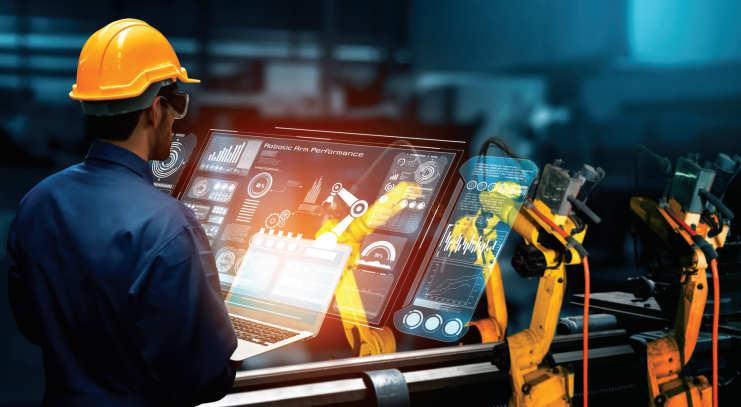
Establishing a thriving and innovative global manufacturing hub is a key part of the UAE’s vision to diversify and expand the nation’s economy towards a net zero future, which has been a focal point for the ADIPEC 2022 Smart Manufacturing Zone.
Speaking at the Smart Manufacturing Strategic Conference, during a session titled ‘Perspectives on Investment: the key drivers to attracting manufacturing investment to the UAE’, His Excellency, Saud Abu Alshawareb, executive vice president, Dubai Industrial City (DIC), said, “We are agile with a full supply chain in DIC – we are an enabler since 2014, with six sectors. We have the largest electronic recycling facility in the world, generating raw materials for the world. Because of this circular economy, our aim is to decarbonise the industrial sector as part of Net Zero 2050.
Smart manufacturing is playing a growing role in the UAE.
The manufacturing industry continues to face rising demands for clean energy and consumer scrutiny of its environmental impact.
ADIPEC Review 30 oilreview.me Issue 8 2022
The energy-related sectors are going to play a vital role in reaching these ambitions for US$300bn by 2031.”
Image Credit : Adobe Stock
“Today, ‘Made in UAE’ products can reach high-end markets because we have decarbonised products, produced with lowcarbon emissions, which open up our products to markets in Europe and the US.”
Meanwhile in the ADIPEC strategic conference programme, industry leaders also explored the role of carbon capture and utilisation (CCU) and storage technologies as a major contributor to transition strategies, and how recent investments are driving technological advancements in this space.
During the Strategic session ‘Accelerating progress in carbon capture, utilisation and storage: scaling up the opportunity,’ Laure Mandrou, senior vice president, Carbon-Free Solutions, Technip Energies, said,
“Acceleration is really necessary to ramp up CCUS, whether this is in terms of policy, technology or finance.
“We need more projects going through derisking and into execution to start decarbonising further. We need to target more projects to FID (Final Investment Decision) with the solutions we have today. Forums like ADIPEC really help bring an alignment for the industry to move this forward,” she said.
At ADIPEC, Abu Dhabi National Oil Company (ADNOC) signed agreements with 25 companies potentially worth AED 35bn that will stimulate investment in local manufacturing of critical products in support of the diversification of the United Arab Emirates (UAE’s) industrial and manufacturing infrastructure.

The agreements set out the suppliers’ intention to manufacture 21 products in the UAE, supporting the delivery of ADNOC’s 2030 strategy. Leading companies who signed agreements with ADNOC include Siemens, Halliburton, Celeros FT, Emerson, Proton R&D and Schneider Electric.
Among the products which could be manufactured in the UAE are pressure vessels; compressors; pipeline inspection
gauges; specialist valves; industrial pumps; switchgears; variable speed drives and flame and gas detectors. The agreements could also see investments made in machining, reverse engineering and nondestructive testing equipment. n

Today, ‘Made in UAE’ projects can reach high-end markets because we have decarbonised products.”
ADIPEC Review Issue 8 2022 oilreview.me 31 Image Credit : dmg events
HE Omar Ahmed Al Suwaidi, undersecretary, Ministry of Industry and Advanced Technology, speaking at ADIPEC.
Showcasing a wide range of the latest technologies
TENDEKA EXHIBITED AT ADIPEC under the TAQA umbrella, following its acquisition by TAQA earlier this year.
“We're very excited to be here as a part of the TAQA family. ADIPEC is the perfect venue for us to exhibit our key technologies,” says Abbott. “We have wide variety of technologies; these include lower completion technologies such as packers, sandscreens, inflow control devices, autonomous inflow control and re-flow (injection) control devices, along with wireless advanced completion tools, which enable downhole control at the touch of a button. Among these is the Intelligent Safety Valve, on display at Tendeka’s stand.
“Not to mention, we're still working to develop our software and reservoir monitoring technologies in the DTS and DAS interpretation domain,” Abbott adds.
With sustainability at the top of the agenda for all oil and gas companies now, Abbott points out that a lot of the technology offered under the Tendeka umbrella brings sustainability benefits to its clients.

“We aim to enable our clients to get the most out of their wells as efficiently as possible, which involves using more inflow control devices. We’re able to provide calculations to clients to show the savings in terms of tonnes of CO2 per barrel of oil equivalent by using our technology.”
One of the company’s fastest growing new business lines, which attracted lot of interest at ADIPEC, is reservoir chemistries to improve the performance of the reservoir, whether by enhancing the production of hydrocarbons, or working in conjunction with the company’s inflow control devices to reduce the influx of unwanted fluids.
“Our new reservoir chemistry product line is centred around sustainable sourcing and innovation,” Abbott explains. “We're looking at brand new chemicals that have not been used in the industry before and are environmentally friendly. So we're looking at things that are biodegradable, eco- friendly
and come from sustainable sources, such as biosurfactants. One of our most revolutionary fluids we're currently working on is the Nexus, a single phase retarded acid additive which is also environmentally friendly. This is a real game changer for the carbonate acidising market, which is currently dominated by environmentally unfriendly solutions, such as emulsified acids and high concentrations of environmentally hazardous corrosion inhibitors. Our additive allows our clients to improve their performance of hydrochloric acid and reduce the amount of acid required,
thus being able to do the stimulation more efficiently. It also reduces the corrosion rate, removing the need for large quantities of corrosion inhibiters.”
“We've seen more interest in our reservoir chemistries than we expected,” comments Abbott. “I think that comes back to the fact that they are quite novel and very different from what’s on the market today. We are seeing a more conscious approach as well when it comes to sustainability and environmental footprint than we have in previous years. It is really good to see that becoming an integral part of discussions. We have had some very interesting conversations around sustainability and how oil and gas can move into the future, while acknowledging the important role the industry continues to play. Can we do things more efficiently? Yes, for sure. I think the focus needs to be on efficiency and minimising waste. “
“The technologies we're working on for the future are those that have offered efficiencies to clients around the world,” Abbott continues. “In some parts of the world, there is a lot of room for improvement on how the lower completion is put together to produce oil and gas more efficiently,” he says, adding that the company is looking to share the experience from other regions to accelerate adoption. “If you are making a more efficient well that lasts longer, ultimately you may not have to drill as many wells.”
The industry “needs to be willing to take more calculated risks on new technology, especially as we move into a more sustainable era of energy management,” Abbott remarks. “It's a big leap to produce hydrocarbons more efficiently, and to manage carbon emissions. There will need to be some step changes to do that from a technology perspective, which will require a larger degree of risk taking.”
Carbon sequestration is another area the company is investing in. “We have a variety of technologies that can be adapted to improve the efficiency of carbon sequestration, in both the upper and lower completions. We've recently presented several SPE papers with
Jonathan Abbott, chief technology officer, Tendeka.
Advanced Completions company Tendeka took the opportunity at ADIPEC to raise awareness of the full scope of its products and technologies.
Oil Review Middle East met with Jonathan Abbott, Chief Technology Officer, to learn
more.
ADIPEC Review 32 oilreview.me Issue 8 2022
This is a real game changer for the carbonate acidising market, which is currently dominated by environmentally unfriendly solutions.”
Image Credit: Tendeka
the methodology behind how we would apply these technologies, and we're actively seeking partners to apply them. One of those technologies is the PulseEight wireless Intelligent Conrol Valve, which allows us to optimise pressure within a completion during the carbon sequestration process, therefore removing the need for complex and expensive completion designs that can accommodate all phases of the sequestion process. These devices are retrievable and can be run in other wells when a steady-state injection pressure is achieved.”
Turning to Tendeka’s Middle East operations, Abbott sees strong potential for further growth.
“We have extensive experience in Oman
DECARBONISATION WAS A key theme across the four days of ADIPEC, with a first-of-itskind, dedicated Decarbonisation Zone and Conference. Experts shared their views on the latest innovations that will enable stakeholders to address the growing demand for green solutions, attract strategic partnerships and cross-industry participation, generate funding mechanisms, and convert innovative ideas into practical solutions towards leading a cleaner energy future.
Industry efforts towards climate action were further reinforced by An Eye on Methane: International Methane Emissions Observatory 2022, a report launched by the UN Environment Programme (UNEP), which found that more than 80 oil and gas companies across the world have committed to measuring and reducing their methane emissions. UNEP advised that companies needed to do significantly more to cut methane emissions and tackle climate change.
During the conference session entitled ‘Decarbonising the downstream and petrochemical sectors: an ecosystem of change for downstream players’, Vimal Kapur, president and COO, Honeywell said, “To advance the energy transition, what we’ve done in the last 100 years has to be done four times faster.

“For this to happen, the three important levers are technology, collaboration and government policy. We’ve seen that when these elements come together, decarbonising projects, such as sustainable aviation fuel
(SAF), are implemented quickly. There are several other similar opportunities like emissions monitoring and carbon capture that require a broader collaborative approach."
Speakers specialising in methane reduction urged the industry to take urgent action.
During the conference session titled ‘Operational mitigation action to reduce leakages’, Frigyes Lestak, CEO of Flare2Valve said, “We’re working to solve flaring urgently. There is 140 bcm (billion cubic metres) flaring per day. This would be enough to heat 50mn homes per year. Many flare reduction products are economical. You don’t need new technology. Don’t hesitate, act now. We don’t have a few more years.”
To speed up the industry’s emissions reduction, Peter Harding, founder & CEO of Kelvin said technology that focuses on root cause analysis of methane leaks can result in a 10-20% increase in production, while reducing methane emissions – making certain

technology economically compelling. Such technology also empowers engineers to have more impact. At its stand, the USheadquartered firm demonstrated Kelvin Carbon Maps, which facilitates the optimisation of operations to achieve emissions goals. The solution connects vital data and information about production facilities, assets, and processes to engineers and operators, providing teams with complete visualisation of their entire operations in realtime, along with the information required to take action and improve operations.
Bart Cornelissen, Energy, Resources & Industrials leader at Deloitte said, “The Middle East is playing a pioneering role in the energy transition, as it possesses a built-in advantage and a head start in this journey. Major projects are taking place in the region to produce blue as well as green hydrogen, and the United Arab Emirates and Saudi Arabia are becoming major blue hydrogen and ammonia exporters by leveraging their existing midstream and downstream infrastructure.
“As oil and gas companies continue to pledge support to net-zero goals, their needs continue to grow when it comes to figuring out new means to get there. We are present today at ADIPEC as part of our ongoing efforts to support these companies through this highly complex transition, sharing best practices that enable them to seize opportunities and navigate risks as they go through this transition,” he added.
and the UAE. However, we believe that there's a lot more room to apply our technical solutions to Saudi Arabia, the UAE and the wider Middle East market.” Being part of the TAQA family, with the future
potential of the AlMansoori acquisition, means that Tendeka is well positioned to achieve that, he adds.
“So it's a very exciting time for Tendeka,” he concludes. n
We have a variety of technologies that can be adapted to improve the efficiency of carbon sequestration.”
ADIPEC Review Issue 8 2022 oilreview.me 33
Tendeka specialises in advanced completion technologies.
Image Credit: Adobe Stock
Vimal Kapur, president and COO Honeywell addressing the conference.
Technology, collaboration and policy key to advancing energy transition Image Credit : dmg events
The impact of fluctuating flow on flow measurement

GOOD MEASUREMENT PRACTICE
advocates that flow measurements should occur without instabilities or pulsations in the flow. Even minor inaccuracies in the measurement of high value products can lead to significant financial exposure over extended periods of time. Given the high product value and throughput of most hydrocarbon production processes, a great deal of importance is placed on the accuracy of these measurements.
For oil flow measurement, turbine, Coriolis, and ultrasonic flow meters are the most commonly used devices. However, as oil production declines, these measurement technologies are experiencing substantial changes in the stability of the flow. These changes could have serious consequences for accurate flow measurement.
Unstable flow can occur as a result of a number of factors; physical causes such as increased water content, decreased production, pressure fluctuations, or technological causes including the type of pump operating in the system or even incorrectly-sized test separators.
Each of these can have a significant impact on flow stability, with frequency fluctuations of a range of magnitudes occurring. In particular, the content of water within the oil stream has been increasing in the final export streams from production platforms, with the water content varying significantly with time. This can cause flow stability issues and manifest itself as sizeable low-frequency fluctuations in the flow rate.
As meters often measure the flow into common export pipelines, this creates another issue, as an unstable flow rate from one source adversely affects the flow stability of other sources. This could occur via low frequency fluctuations distorting the comingled flow which could subsequently distort the flow rate at source. Such a situation would be significantly magnified in a typical situation where there is an export pipeline with multiple input lines. The fluctuating flow of one
source could alter the stability of the other inputs and therefore the co-mingled flow.
Addressing instability
The stability of flow must be considered to ensure that accurate measurements are achieved during both the export measurement and the meter calibration. However, whilst it appears that many flow meters are operating in industry under fluctuating flow, they are still calibrated in the laboratory under steady state flow conditions. Despite fluctuating flow being deemed as unacceptable for accurate measurement, due to declining oil production, ageing assets and tightening budgets, it is now becoming increasingly common and is therefore something that the industry must address.
Although it has been identified as a potentially substantial issue, the effect of unsteady flow on different measurement technologies has not yet been fully investigated or examined in a traceable flow facility. This is partly because research and
calibration flow measurement facilities calibrate flow meters in ideal, steady flow conditions. As noted previously, achieving fluctuating flow for research purposes has never been required or desirable from a measurement perspective. Furthermore, the effect that fluctuating flow has on reference measurements means that a totalised mass or volume comparison would be required. This eliminates flow measurement facilities that utilise either pipe provers, compact provers, or master meter systems. The most suitable reference system would require a gravimetric weighbridge for totalised mass and / or volume passed. These facilities are not as common but have a much lower measurement uncertainty, and enable the effects of fluctuating flow to be researched.
There is a significant knowledge gap at present as very little publicly available data exists on the performance of flow meters in fluctuating flows. Differential pressure devices such as orifice plates, Venturi devices and
TÜV SÜD National Engineering Laboratory.
Chris
Mills, consultant engineer
at
TÜV SÜD National Engineering Laboratory, discusses factors impacting flow stability and how the effect of unsteady flow on different measurement technologies can be addressed.
Technology 34 oilreview.me Issue 8 2022
Image Credit TÜV SÜD National Engineering Laboratory
cone meters all use the Bernoulli equation to determine the flow rate. As the pressure of the flow would be strongly influenced by fluctuations, then it is extremely likely that this could introduce significant flow measurement errors. We are therefore currently proposing research to provide conclusive evidence of the effect of fluctuating flow on differential pressure technologies. However, determining the performance of these technologies in both low frequency and high frequency fluctuations requires considerable research investment in terms of both cost and time.
One option available to industry would be to complete a large-scale test programme to evaluate a range of flow meters under nonsteady state conditions. This would allow a better understanding of the issues and provide quantitative evidence of flow
measurement performance in unsteady flow.
At our UK National Standards flow facility, this would manifest itself as a range of flow fluctuations, of up to 10 Hz, being created to enable a wide range of flow measurement technologies such as turbine, Coriolis and ultrasonic flow meters to be evaluated under non-ideal conditions. This could cover cyclical, asymmetric and random pulsations.
In the laboratory environment, the advanced flow meter diagnostics from technologies such as Coriolis and ultrasonic flow meters could be trended and analysed with respect to unsteady flow. For example, ultrasonic flow meters offer diagnostics that can provide measurements of parameters such as speed of sound, signal to noise ratio, flow velocity, alarm, failure indicator, and velocity sampling interval to name but a few. It may also be possible to use the advanced flow meter diagnostics to indicate when fluctuating flow is occurring as a qualitative measurement. Ideally, it may even be possible to potentially correct for any adverse effects on the measurement that may arise from fluctuating flow. While it is not possible to preempt the results of any such test programme, this is certainly an area that would be of great
Excelling in steel wire ropes

BRUNTON WIRE ROPES FZCo., a rope specialist, manufacturing steel wire ropes in Jebel Ali Free Zone, Dubai, is expanding its operations in response to customer demand.
Established in 2003, it is one of the five global plants owned by billion-dollar rope and specialty steel giant USHA MARTIN GROUP, and is one of the best in the world. This company, backed by the 100 years plus group experience in evolving advanced rope designs, with a sophisticated manufacturing base possessing state-of-the-art machines, as well as rich experience on negotiating dynamic market forces, has today become a real solution provider to the markets it serves. Brunton Wire Ropes sells its products to more than 33 countries in Europe, North America, South America, North Asia, Australia, Africa, Middle East and South East Asia.
This plant, in Dubai, produces and supplies steel wire ropes for oil & gas, crane, general engineering, fishing, dredging, mining and elevator applications, with diameters ranging between 3mm and 77mm. With the capability of producing and selling new generation ropes such as the compacted and plasticated ropes, it enables consumers to obtain a complete solution from a single plant.
Brunton Wire Ropes has a fully-fledged rigging facility with a dedicated workshop and skilled riggers to cater to the needs of customised solutions for our customers in the construction, oil, crane, marine and general engineering industries. It makes all types of slings, aided by a large inventory of quality end fittings, and is in the process of supplying pendants to OEMs in the USA and Europe.
The sophisticated testing facilities from raw material to final product give the plant a qualitative edge over many competitors and thus, it enjoys the confidence of many major oil giants, mining groups, elevator OEMs and big rigging companies. This plant is QMS certified and additionally has Lloyds & API (American Petroleum Institute) certifications. As a result, Brunton Wire Ropes has grown more than 300% in 15 years.
The extensive inventory planning, combined with sound logistics
The company manufactures steel wire ropes at its plant in Jebal Ali.
interest to industry.
Due to the lack of traceable data currently available to industry, it is not yet possible to specify which technology might deliver the solution to the problem of fluctuating flow. Only by completing a thorough evaluation programme, will it be possible to identify the most suitable flow measurement technology. However, once this goal is achieved, some measurement techniques that are highly prone to mismeasurement due to fluctuating flow could be replaced, delivering greater confidence in the measurement of fluctuating flow and consequently greater confidence in financial transactions across industry. n
TÜV SÜD National Engineering Laboratory (www.tuvsud.com/en-gb/nel) is a global centre of excellence for flow measurement and fluid flow systems and is the National Measurement Institute responsible for the UK’s National Flow Measurement Standards. As an international technology services organisation and provider of pipeline fluid management services to the global petroleum industry, the company has an impressive track record in the development, design and application of new technologies.
leverage due to its geographical position and supported by a large efficient port at Jebel Ali, have helped Brunton Wire’s customers to get ropes faster in all parts of the world.
The group’s R&D capability is continuously helping Brunton Wire to offer new designs to consumers, thereby gaining technological leadership.
The company is in the process of further expansion in augmenting the rope capacity and adding value-added products in response to customer demand.
In short, the Group’s backward integration model, based upon contractual steel resources, in resonance with the quality excellence commitment and aided by the experienced executive leadership, have made Brunton Wire Ropes FZCo., a name that spells reliability to all sections of wire rope consumers around the globe.
Technology Issue 8 2022 oilreview.me 35
One option available to industry would be to complete a largescale test programme.”
Image Credit: Adobe Stock
Addressing the cyber threat

IN EVERY NATION, the challenge of keeping the energy infrastructure, secure and operational is a necessary part of its survival. However, drawing up cybersecurity practices for a nation’s energy infrastructure is very different from creating the cybersecurity policy of an enterprise’s IT organisation.
Being part of the critical national infrastructure, the energy industry is already facing an overload of regulations, many of them redundant and obsolete. Most of the regulations were drafted and implemented many years ago, when the realm of cyber warfare was still in its infancy. There is also the possibility of making a mistake while following a cutand-paste approach to applying regulations that are not well suited for the energy industry.
However, in the face of growing targeted cyberattacks on global energy infrastructure, it is also necessary to raise the bar on minimum standards for safe and secure operations.
The growing East European warzone has introduced a huge escalation in cyber threat activity, with national threat actors, who are sophisticated, with deep pockets, and whose objective is the destruction of critical national infrastructure rather than ransomware.
In today’s heightened levels of cyber alerts, while bringing compliance and regulations up to speed for the energy industry, no government wants to be faced with a realisation post-facto, that it has acted too slowly, or did too little, to raise the bar enough.
Another hard realisation for regulators is that the worlds of information technology and operational technology are vastly different, and what works for one will not necessarily work for the other. Take for example the best practice of resetting passwords often. While it may be relatively easy to update passwords in an enterprise IT setup, it may be complicated, time consuming, and expensive to do this across a sprawling industrial control system network.
Following a tick box regulation approach to upgrade cyber security best practices across an energy enterprise, may therefore cause unplanned and costly setbacks.
Daily monitoring and collaboration of data related to global threats on critical national infrastructure like the energy industry, reveals the following:
• Having complete visibility into every asset in the energy infrastructure is necessary for survival since attacks can enter from anywhere and at any time.
• Most national energy systems have not been built to withstand a continuous, directed, attack from state level actors.
• As new threats emerge and old risks evolve, the minimum level to
The growing East European warzone has introduced a huge escalation in cyber threat activity.
safely operate an asset continuously changes, in other words the bar is continuously being raised.
• Certain nations are weaponising their domestic threat actors to align and advance war efforts, with destruction and not profit being the ultimate objective.
Following are some suggested measures to boost the resilience of energy enterprises:
1. Inventory of critical assets
Develop an inventory of all critical assets and their connections. Connections would also fall into the category of critical since they are supporting critical assets. Also evaluate non-traditional assets.
2. Monitor the assets
Keep track of all the parameters of the assets as well as changes to these parameters.
3. Monitor the network
Monitor the network activity at multiple levels. This includes signature detection, ICS protocols inspection, anomaly detection.
4.
People and processes
Operationalise security processes, train people and teams, and set goals for continuous improvement.
5. Hardening of assets
Have a plan to reduce risk and harden the assets by knowing where are the vulnerabilities and having a plan for remediation.
6.
7.
Simulation of an attack
Make a plan on how people and processes are supposed to react during an attack and practice periodically. Test the resilience of the enterprise through communication systems.
Backups of data and systems
There must always be a plan for backup and recovery of data as well as continuous testing of the plan. Other than recovery of data, recovery of systems and enterprise operations should also be included in the testing.
8. Involve key partners
It is a good idea to involve strategic suppliers and partners in the testing exercises. Their presence can make a difference by reducing the obstacles and accelerating a successful recovery.
Moving forward, the best advice for energy enterprises is to plan for failures and how to recover. An energy enterprise not planning for failures essentially will not have a plan to recover when its infrastructure is targeted, and operations finally paralysed. n
By planning for cyberattacks and practising how to recover, energy enterprises can boost their resilience and robustness against destructive national threat actors, writes Marcus Josefsson, VP EMEA at Nozomi Networks.
Cyber Security 36 oilreview.me Issue 8 2022
Image Credit: Adobe Stock

Treating cyber security as a priority
NERLAND BEGAN BY commenting that industry professionals are becoming more aware of cyber security threats now.
“They see that this is really becoming a risk for their operation and personnel. With all the unrest in the world now, the invasion of Ukraine, and so on, we see an upswing in people starting to see that this [cyber security threat] is serious now.”
Nerland said that the company had conducted a survey with regard to cyber security awareness in Europe, the Middle East, Africa, and Asia Pacific. The respondents included publicly listed companies and privately held firms, spanning energy industry services, power transmission and supply, renewables, and oil and gas.
Explaining the survey results, Nerland said, “We did roughly half of the interviews before the invasion of Ukraine and roughly half afterward. And we see actually between those time points, there is a 5% increase in the concern about cyber security.”
Moreover, the respondents in the Middle East and Africa were more concerned about cyber attacks than their counterparts in Europe.
Key findings
Some key numbers from DNV’s The Cyber Priority report:
• The concern among Middle Eastern and African (MENA) energy professionals over cyber security threats in the sector is stronger, with 69% believing that an attack is likely to cause loss of life, compared with a global average of 57%
• 63% in the Middle East and Africa prioritise investment in ensuring the cyber security of their equipment vendors and supply chain compared with Europe (64%) and the Americas (57%)
• 56% of Middle East and Africa (56%) experts said that they would know exactly what to do if they suspected an attempted attack on their organisation’s IT or OT environments compared to Europe (69%) and the Americas (60%)
• 61% of Middle East and energy executives think their organisation’s training is effective compared to Europe (56%) and the Americas (51%)
• Energy executives in the Middle East and Africa are most likely to think that a serious cyber-attack would harm the environment (82%) compared to Europe (71%) and the Americas (72%)
• The Middle East and African respondents express a greater sentiment (44%) that their organisation would need to be impacted by a major incident before it would spend any more time or money on its defences compared with Europe (29%) and the Americas (39%), despite respondents in the Middle East being more likely to expect a major cyber incident in the industry in the next few years.
they have the full picture. What is your exposure? You need to know the risks, basically. Number two is that they need to act upon this these known risks and do the right things, whether that is training, new technology or standardisation, and really build a defense based on their current situation.”
Companies need to have a long-term plan and more of a strategy on cyber security, just as they would have a business strategy, he added.
With regards to the Middle East, Nerland says that the region is open to accepting new technology, and issues surrounding cyber security are also ramping up.
High on the agenda
Nerland reported that many respondents expect attacks on control systems to really cause harm, and even deaths, within the next couple of years. A second concern is on the environmental side, for example oil spills.
The third main issue surrounds business continuity. “For example, last year there was an attack in the US on the Colonial Pipeline that took it out of operation for about five days. So we see that what initially seems like a technicality, with hacker attacks, can all be the root cause of a safety situation.”
What should companies do to protect themselves from cyber-attacks?
“Number one, they need to make sure
“The issue is high on the agenda here. To me, it seems like a region that is very open to new technology and they want to do the right things. We see big opportunities in this area [of cyber security],” he said. “We've been in the UAE for many years. We see that in the Middle East countries that provide risk assessment, and safety for classic oil and gas services, cyber security is certainly climbing up the ladder.”
Finally, speaking about challenges faced in this sector, Nerland says that these issues are worldwide and not region-specific. For example, he says, most companies have a “wait-and-see attitude” which means they are likely to develop a cyber security strategy only after they have fallen victim to an attack.
“I really hope that the industry is waking up now, as our survey indicated that around 80% of respondents said that we are very aware now, but we do too little,” concluded Nerland. n
Download a copy of The Cyber Priority from: www.dnv.com/cyberpriority
Cyber Security 38 oilreview.me Issue 8 2022
At ADIPEC, DNV business development director Christian Nerland spoke to Oil Review Middle East about some of the conclusions of its latest cyber security research, and how companies can protect themselves from cyber attacks.
The respondents in the Middle East and Africa were more concerned about cyber attacks than their counterparts in Europe.”
Companies need to have a long-term plan.”
Digitalisation for enhanced asset performance management

TECHNOLOGY HAS BEEN advancing at a breakneck speed, providing energy companies that implement it throughout their operations with additional benefits. It has helped boost business transformation, further enhancing decision-making processes and achieving decarbonisation objectives. Latest innovations have supported businesses in a number of ways, with technologies such as AI, robotics, and automation transforming the working methods into a seamless experience, while also safeguarding manual workers from hazardous working conditions.
ADIPEC, one of the world’s most influential gatherings for the energy industry, held in Abu Dhabi from 31 October - 3 November, made the significance of technology evident in its ‘Digitalisation in Energy’ exhibition. The exhibition serves as an ideal forum for the global energy industry, facilitating the sourcing of latest technological innovations to improve efficiency, uncover untapped value and opportunities, and optimise costs in the energy sector.
One of the key takeaways from ADIPEC was digitalising the energy sector and showcasing modern and innovative solutions
that assisted the sector to focus on both capital and operational efficiency, deliver optimum return on investments, and integrate technology at each production stage.
Among others, the highlights of the exhibition for digitalisation in asset management stood out for most energy companies. Asset management is essentially a cost-effective system of developing, operating, maintaining, upgrading, and disposing of assets, which could be seen in AssetWise Reliability, one of Bentley Systems’ products showcased at ADIPEC 2022. The system has been designed to assist in enhancing asset performance and reducing costs incurred. It can further transform data into real-time information with advanced analytics that help improve operational performance.
OQ, an integrated energy company in Oman, leveraged this solution by Bentley Systems to develop a centralised digital asset performance management (APM) system, which resulted in the company being awarded winner in the Power and Process category at the Going Digital Awards, held in London from 14-15 November. The company operates and manages numerous plants and assets, along with a 4,500 km pipeline across Oman. OQ aimed at digitalising asset management processes to enhance asset performance and reliability, further ensuring safe and secure operations at the plants. Due to the high cost and inefficiency of paper asset data and previous reactive maintenance records, OQ realised the necessity of developing a centralised digital asset performance management (APM) system.
The AssetWise Reliability solution was
selected by OQ as its central asset data management platform, as it provided effective failure reporting and analysis, asset health indicators, and digital inspection strategies to enable corrective maintenance management. The digitalised APM system further facilitated reduction in asset failures and unplanned plant shutdown, and also minimised the environmental risks of flaring. According to statistics, the implementation of APM at one compressor site saved 14.8% in overall maintenance costs, and reduced functional failures by 50%, further achieving an increase in the annual operational reliability by 4.3%. OQ’s digitalisation strategies further include integrating APM as a part of its efforts in developing a digital twin.
Debabrata Chakraborty, regional directorMEA & Turkey at Bentley Systems, highlighted the significance of asset reliability in company operations. He said, “We developed AssetWise Reliability as a broad solution for proactive inspection and maintenance programmes for new and existing assets in a digital twin environment. Strategy development utilises formal methods in order to achieve asset performance objectives within the asset’s present operational context, further mitigating risks. It establishes a solid foundation for risk-based reliability thinking, so that both manual and AI-enabled operations can leverage it to drive decision making. It further assists in handling asset failures, by using risk-based inspections and a processsafety focus.” n
Debabrata Chakraborty, regional director – MEA & Turkey, Bentley Systems.
Digitalisation plays a key role in risk mitigation for asset management, says Debabrata Chakraborty, regional director – MEA & Turkey, Bentley Systems.
The system has been designed to assist in enhancing asset performance and reduce costs incurred.”
Digitalisation Issue 8 2022 oilreview.me 39
Image Credit: Bentley Systems
Positive outlook for Stevens Supply International (SSI)
STEVENS SUPPLY INTERNATIONAL (SSI), Dubaibased suppliers to the oil, gas and energy-related industries, is optimistic about market prospects in the Middle East. The company’s CEO, Bobby Stevens, spoke to Oil Review Middle East

How do you view business prospects in the Middle East?
I am very encouraged by the increase in activity in the region. We cater primarily to the exploration aspect of the industry, and the continued increase in rig utilisation and day rates is a welcome change from the past several years. With the position the current administration in Washington has taken, coupled with the conflict in Europe, I see no reason for the present trend not to continue.
How are you looking to expand your business in the region?
Growing the business is always a priority. We have maintained a predominantly defensive posture since the collapse of the industry more than seven years ago, but are now aggressively expanding our portfolio of products and services
drilling rig
HELMERICH & PAYNE, THE global leader in drilling rigs and technology, is expanding its partnerships in the Middle East with a customised Flex3 rig. This updated design, the newest addition to the industry standard FlexRig® fleet, is uniquely enhanced for mobility and agility in Middle East terrain, without compromising unconventional pad drilling that advanced drilling programmes require.
World-class equipment for unmatched performance
Unlike most conventional rigs, this Flex3 walking rig is a side saddle configuration to reduce flat time during common rig activities: drilling, pad-to-pad rig moves, and well-to-well rig walks, thoughtfully designed with environmental stewardship and safety in mind.
A hookload of 1,000,000 pounds, a 720,000-pound setback capacity, and the capacity to set almost 24,000 ft of 5 ½-in drillpipe in the racking board, equips the rig for highly complex lateral wells. Its walking capability offers the flexibility of 500 ft in a straight line, or multiple rows within a 200 x 50 ft box. Also noteworthy is the patented H&P BoomBox. It removes the need to break electrical connections during walks, allowing the rig to stay energised continuously. Complex connections are reduced and rig up time is minimised through the substructuremounted choke manifold, mud gas separator, trip tanks, and pump back tank.
The condensed box-on-box substructure of the Flex3 reduces the number of rig move loads, allowing for an efficient rig down and rig up. No cranes are needed to move the rig’s backyard skids, including the engines, mud pumps, and mud tanks. Furthermore, the mast, raised and lowered hydraulically, contains an integrated block and top drive that does not need to be removed.
Helmerich & Payne combines the expertise, technologies, and advanced rigs to streamline the drilling stage.
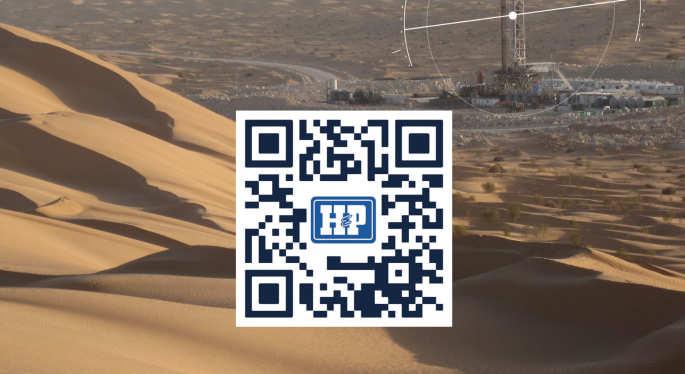
Founded in 1920, Helmerich & Payne, Inc. is committed to delivering industry leading
as well as our global footprint. An agreement with SONIHULL has recently been put in place, which brings SONIHULL’s range of eco-friendly ultrasonic antifouling technology to the oil, gas and energy-related industry throughout the regions serviced by SSI; and the opening of an office in Ghana gives us a presence in a region we have serviced from Dubai for more than 20 years.
What importance do you attach to bringing the latest technologies and innovations to your clients?
SSI has always strived to provide our customers with the best products and latest innovations available. Our strategy has been, and continues to be, to align and ally ourselves with industryleading manufacturers and innovators. Our alliance with SONIHULL reconfirms that commitment. The oil and gas industry becomes more and more competitive every day, and Stevens Supply is committed to providing our customers with the products and services that gives them the advantage they require to not only succeed but excel.
drilling productivity and reliability. H&P operates with the highest level of integrity, safety and innovation to deliver superior results for our customers and returns for shareholders. Through its subsidiaries, the company designs, fabricates and operates high-performance drilling rigs in conventional and unconventional plays around the world. H&P also develops and implements advanced automation, directional drilling and survey management technologies.
For more information, visit www.helmerichpayne.com.
40 oilreview.me Issue 8 2022
Encounter Helmerich & Payne’s world-class Flex Rig fleet with its FlexAR augmented reality.
Bobby Stevens, CEO of Stevens Supply International (SSI).
Achieving the next level of drilling outcomes with the Middle East’s new industry standard
Company
News
Image Credit: SSI
Image Credit: Helmerich & Payne
Trends shaping sustainability innovation in the Middle East
AT THE FUTURE Investment Initiative in Riyadh, experts from global consultancy Bain & Company focused on innovations poised to have an impact on the sustainability of seven industries: advanced manufacturing services (AMS), retail, banking, energy, healthcare, consumer products and automotive.
They have highlighted the trends and innovations gaining momentum in the given sectors.
3D printing explores and accelerates larger, more complex AMS projects
The construction sector contributes a chunk of energy-related CO2 emissions. However, 3D printing’s latest advances in printing new materials, including cement and metals, and in printing larger objects can reduce the use of natural resources and waste in the sector, while increasing efficiency. Construction 3D printing allows faster and more accurate construction of complex or bespoke items. Companies that use 3D printing to lower costs can save up to 15% of the typical cost of a project.
Efficiency in retail is fundamental, and AI more accurately monitors and reduces scope 3 emissions
A large amount of retail emissions are scope 3 indirect emissions in their supply chain, making the industry one of the leading emitters in this class. While scope 1 covers direct emissions from sources owned by a company, and scope 2 focuses on emissions from the electricity and heating or cooling sources they buy, scope 3 is particularly complex to manage since it involves a system, much of which is beyond the retailer’s direct control. Technologies including artificial intelligence (AI) can help monitor the system’s carbon footprint, forecasting and reducing emissions by optimising internal operations and those of external partners.
Banks continue to create new forms of sustainable value
As fintech rises, banks are always competing with digital natives. While banks have a relatively small direct environmental footprint, they greatly influence how companies and consumers act, invest and address their environmental footprints. Among consumers, the market for green products is growing quickly, and that means an enormous financing opportunity exists for lenders. Increasingly, regulators are also requiring banks to measure and disclose their environmental impact, a task sometimes made difficult by limited access to reliable portfolio data and consistent standards of measurement.
Investing beyond carbon is now fundamental and non-negotiable for an entire portfolio-level transformation by energy
companies. Expanding government interventions, incentives and subsidies, coupled with changing customer, investor and employee expectations have leading energy companies reinventing and diversifying to lower the amount of ‘human-made’ greenhouse gas emissions that come from energy sources. Digitalisation is creating new opportunities for partnerships and innovative business models, but companies must balance several other critical issues too, including energy affordability, energy security, and expected return on investment. One aspect of energy giants’ multifaceted approach is the creation of corporate venture capital funds to access new energy technology.
Our complex and fundamental healthcare industry is addressing the need to foster the circular economy. To date, more than half of all plastic ever produced has become waste, and its production has a significant greenhouse gas footprint. A substantial portion of the world’s plastic waste comes from healthcare, the majority associated with lifesaving medicine and procedures. Recently the World Health Organisation estimated that the critical products needed to manage through a global pandemic have included 87,000 metric tons of personal protective equipment and 144,000 metric tons of syringes, needles, and other vaccine waste, as well as the chemical and plastic waste from more than 140mn test kits.
A systemic change toward a circular economy could help reduce waste without compromising care.
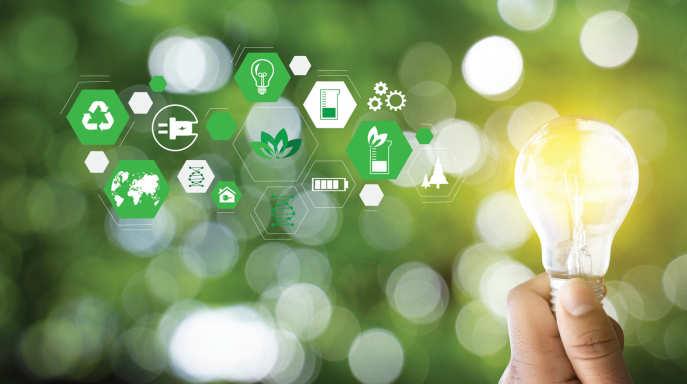
Food consumption and production habits are at the heart of ESG growth, with vertical farming and lab-grown meat leading the way
The global food system is incredibly successful, feeding 7.9bn people and generating a third of global GDP. But at the same time, it places a hefty burden on the environment, creating more than a quarter of all greenhouse gas emissions and contributing
to deforestation and species extinction. New approaches to agriculture and eating, including vertical farming and lab-grown meat, can reduce the amount of water and land required to produce the same or greater amounts of food. This decreases the need for long-haul transportation, chemicals and pesticides. Cultured meat, requiring less energy and water than traditionally farmed meats, can create significantly fewer emissions.
The automotive industry is embracing air mobility enabled by changing regulations and societal acceptance Cities consume most of the world’s energy supply and highway vehicles release billions of tons of greenhouse gases into the atmosphere each year. Urban air mobility (UAM), transporting both goods and people and powered by drones, could decongest cities, reduce noise pollution, and help to decarbonise the energy sector. New technologies, such as electric propulsion and enhanced battery capacity, applied to vertical takeoff and landing systems make this technically possible.
The pace of sustainability innovation mandates a multidimensional approach to value chain transformation. Sustainability is a complex, interconnected, and evolving topic that requires constant evaluation. The pace of innovation is increasing, ESG inclusion is becoming fundamental, and tracking the complex ecosystem’s development is essential. It is important to continue to unpack these topics, exploring a multidimensional approach to innovation strategy, start-up ecosystem engagement, venture capital investing, and business building.
This article is written by Tom De Waele, Middle East managing partner, Akram Alami, partner and Middle East ESG lead and Truc Mai Dupont Vohong, vice president, Bain & Company.
Innovation Issue 8 2022 oilreview.me 41
Credit : Adobe Stock
Innovation is shaping sustainability in every industry.
Image
Building and network manufacturing ecosystems

AT THE SPS 2022, Rittal, Eplan, Cideon and German Edge Cloud(GEC) demonstrated how to connect plants, products and production processes with their respective digital twins for smart production.
“The data is generated in ecosystems that are often still incompletely networked even today. If it is possible to create a complete digital twin for each plant, product and production process and then, in turn, to connect them intelligently, this will be a lever on the way to smart production,” said Markus Asch, CEO Rittal International and Rittal Software Systems. He added, “The SPS is the ideal environment for dialogue with control, switchgear and mechanical engineering professionals in particular – and for answers to the question of how the data from the digital plant twin can also be used to add value in operations. There are great opportunities in this.” To this end, the companies of the Friedhelm Loh Group support their customers with domain knowledge and tangible solutions.
Eplan and Rittal are working with control, switchgear and machine manufacturers to advance the development of the automation twin of machines and systems and make the data usable during operation. Cideon, with its expertise in CAD/CAM, PDM/PLM and product configuration, increases data consistency around the digital product twin. German Edge Cloud uses information from system data for faster networking and to visualise processes as a digital production twin. IIoT-supported production management with the ONCITE Digital Production System then increases production efficiency and flexibility.
Digital from engineering to operations
One focal point at the joint booth of Rittal, Eplan, Cideon and GEC was data consistency along the entire value chain of panel building and switchgear manufacturing – from engineering to supply and from manufacturing
to the operational phase of the systems. Panel builders and switchgear manufacturers save time and money in their value-added process with solutions from Eplan and Rittal.
More speed for electrical engineering and supply
The new Eplan Platform 2023 ensures even faster 3D planning with its new graphics engine. An international macro administration to support different standards further accelerates the process. Eplan eStock complements the central article management in the cloud. Eplan Harness proD now supports users with everything involving the cabling of machines. Rittal is speeding up the supply chain with configurators and rapidly deliverable system technology, which now also further integrates the compact AX series as a fully-fledged compact enclosure.
New machines and software for the workshop
The WT C10 Wire Terminal, a highlight of the Rittal trade fair, is a new version of the fully automatic wire processing machine, processing wires 10 times faster than by hand. The development offers many improvements, for example a modular
approach to the supply and output of wires with a new wire magazine system and quickly exchangeable feed blocks. The Wire Terminal’s new software architecture ensures seamless integration into the workflow of the RiPanel Processing Centre.
Eplan’s ‘Smart Mounting’ software now also visualises the mechanical and electrical components used in enclosure construction, while Eplan Smart Wiring guides you through the cabling.
IIoT data for manufacturing management
The operational phase of the systems involves more than just maintenance benefits through system data in the ePocket digital wiring plan pocket, or 75% energy savings with new Blue e+ cooling units or smart services. The ONCITE Digital Production System combines formerly separate core features of digital production in a system with a flexible architecture: agile production management with MES and MOM functions, industrial IoT as a database and low-code development for simple application development. On top of this, edge computing meets all demands regarding sovereignty in data processing. n
Rittal, Eplan, Cideon and German Edge Cloud showed how to connect three ecosystems with their respective digital twins for smart production: plants, products and manufacturing processes.
What contribution is control, switchgear and mechanical engineering making with consistent data from engineering to plant operation? Rittal, Eplan, Cideon and German Edge Cloud discussed these questions with visitors to the SPS in Nuremberg, and explained how they use domain knowledge to promote solutions in the relevant ecosystems.
Technology 42 oilreview.me Issue 8 2022
Photo Credit : Rittal GmbH & Co. KG
How oil and gas control rooms can deal with change
THE OIL AND gas industry is going through unprecedented fluctuations. The transition to renewable energy is accelerating globally, forcing oil & gas companies to reduce costs and even review their business models.

At the same time, the industry is facing the challenge of accelerating digital transformation to reduce operating costs, offer better customer service, and maintain flexibility. Digital technologies are expected to play an important role in making energy systems around the world more connected, intelligent, efficient, reliable and sustainable.
Coping with change
As control room operations need to be adapted to the reigning market conditions, an important question arises: which technologies are needed to smoothen the transition? Barco sees three important trends:
Technology to transition smoothly: Control rooms are transforming more and more into fully networked environments. Visual information can be sent to operators and other users wherever they are connected. By using standard networks instead of traditional AV equipment, control rooms can scale and adapt almost without limits.
Organisational changes also often force control room operators to transition from one control system to another. Networked visualisation solutions, like Barco’s Transform N CMS, make this much easier and even enable operators to work with different systems at the same time.
Technology to view ergonomically:
Today’s control room operators need to handle a variety of data sources and sensor types. The challenge for control room integrators is then to provide an intuitive and ergonomic way for operators to view and interact with this multitude of sources.
Operator workspace solutions such as Barco’s OpSpace enable operators to visualise all critical sources in a single pixel
space and easily control them with a single keyboard and mouse.
Granular access control (based on users and roles) ensures that operators see only the data that is relevant to their job.
Additionally, to provide a full situational overview for a group of operators and foster their collaboration, a large video wall can make the difference. TruePix, Barco’s latest LED video wall, is an excellent choice for this, including some unique features to tackle operator eye fatigue.
Technology to scale securely: Whatever the future brings, the workspace and common operational picture in the control room will become more complex. At the same time, that information might also need to be shared securely across an increasing number of global sites and experts.
Networked visualisation allows control
room content to be sent anywhere in a secure way. With a workspace solution like OpSpace, operators can securely access and mix OT and other content sources across multiple security domains and physical locations, integrating the data only at the presentation layer.
Supporting the transition
Barco can help customers make their modernisation process much smoother. With more than 30 years of experience in control rooms, clients can count on Barco to view better, share faster, resolve quicker. n
To find out more, discover the company’s control room solutions for utilities at https://www.barco.com/en/solutions/controlroom/transmission-control-center or get in touch with a Barco expert at https://www.barco.com/en/contact
Oil and gas control rooms are bracing themselves for important changes in the industry and while dealing with this is always hard, control room managers can make important technology choices to make transitions much smoother.
Sponsored Content Issue 8 2022 oilreview.me 43 Image Credit : Barco
The oil & gas industry is going through unprecedented fluctuations.
Project Databank
Compiled by Data Media Systems
OIL, GAS AND PETROCHEMICAL PROJECTS, SAUDI ARABIA
Project Name City Facility Budget (US$) Status
Advanced Polyolefins Company - Propane Jubail Propane Dehydrogenation, 1,880,000,000 Engineering & Dehydrogenation (PDH) and Polypropylene (PP) Complex Polypropylene Procurement Al-Khafji Joint Operations (KJO) - Dorra Gas Field Development Eastern Region Gas Field 3,000,000,000 FEED Genoil - Super Upgrading Refinery Complex Riyadh Refinery 5,000,000,000 Engineering & Procurement
Maaden - Phosphate 3 Complex - Sulfuric Acid Plant, Waad Al Shamaal Phosphoric Acid, 2,500,000,000 EPC ITB Phosphoric Acid Plant, Beneficiation Sulphuric Acid
Pan Asia - Jizan City for Basic & Downstream Industries - Jizan Polyethylene terephthalate (PET), 3,800,000,000 Construction Petrochemical & Chemical Fibre Integrated Project - Overview Purified Teraphtalic Acid (PTA), Petrochemical & Chemical Fiber Integrated Project - PTA and PET Plants Polybutylene Terephthalate (PBT)
Pan Asia - Jizan City for Basic & Downstream Industries - Jizan Polyethylene terephthalate (PET), 1,300,000,000 Construction Purified Teraphtalic Acid (PTA)
SABIC - Saudi Aramco - Yanbu Crude Oil To Yanbu Polyethylene, Polypropylene 25,000,000,000 FEED ITB Chemicals (COTC) Complex
SATORP - Amiral Petrochemical Complex - Overview Jubail Rubber, Polyethylene 5,000,000,000 EPC ITB
SATORP - Amiral Petrochemical Complex - Package 1 - Jubail Propylene, Ethylene 1,400,000,000 EPC ITB Mixed Feed Cracker
SATORP - Amiral Petrochemical Complex - Jubail MTBE 1,900,000,000 EPC ITB Package 2 - Derivatives Complex
Saudi Aramco - Berri Oilfield Expansion - Berri Gas Oil Separation Plant (GOSP) 2,000,000,000 Construction Gas Oil Separation Plant Expansion
Saudi Aramco - Berri Oilfield Expansion - Overview Berri Development Drilling & Production 6,000,000,000 Construction
Saudi Aramco - Dammam Oilfield Redevelopment Dammam Development Drilling & Production 1,000,000,000 Construction
Saudi Aramco - Desulphurisation Programme Various Sulphur Recovery, 2,000,000,000 EPC ITB Gas Treatment Plant
Saudi Aramco - Gas Storage Facilities Various Storage Tanks 1,000,000,000 Project Announced
Saudi Aramco - Haradh Gas Increment Program - Haradh Gas Compression 1,200,000,000 Construction North Haradh Field Gas Compression Facilities
Saudi Aramco - Haradh Gas Increment Program - Haradh Gas Compression 1,200,000,000 Construction South Haradh Field Gas Compression Facilities
Saudi Aramco - Haradh Gas Increment Program - Haradh Gas Compression, Welded 2,400,000,000 Construction (Scheme/Program)
Saudi Aramco - Haradh Gas Increment Program - Haradh Gas Compression 1,200,000,000 Construction Satellite Gas Compression Facilities
Saudi Aramco - Hawiyah Gas Plant Expansion Hawiyah Gas Processing 1,200,000,000 Construction
Saudi Aramco - Hawiyah Unayzah Gas Reservoir Storage Hawiyah Storage Tanks 1,950,000,000 Construction
Saudi Aramco - Marjan Field Expansion - Overview Marjan Oil & Gas Field 16,000,000,000 Construction
Saudi Aramco - Marjan Field Expansion - Package 1 - Marjan Gas Oil Separation Plant (GOSP) 5,000,000,000 Construction Gas-Oil Separation Plant (GOSP-4)
Saudi Aramco - Marjan Field Expansion - Package 10 - Marjan Gas Treatment Plant 1,200,000,000 Construction Gas Treatment and Sulphur Recovery Facilities
Saudi Aramco - Marjan Field Expansion - Package 11 - Marjan Natural Gas Liquefaction (NGL) 1,000,000,000 Construction NGL Recovery and Fractionation Facilities
Saudi Aramco - Marjan Field Expansion - Package 2 - Marjan Development Drilling & 1,000,000,000 Engineering & Offshore Facilities Utilities and Associated Facilities Production Procurement
Saudi Aramco - Marjan Field Expansion - Package 3 - Marjan Water Injection 5,000,000,000 Engineering & Offshore Water Injection Platforms Procurement
Saudi Aramco - Marjan Field Expansion - Package 4 - Marjan Gas Field 1,500,000,000 Construction Offshore Gas Facilities and Pipelines
Saudi Aramco - Marjan Field Expansion - Package 6 - Marjan Gas Compression, Oil Train, 1,500,000,000 Construction Tanajib Onshore Facilities Gas Treatment Plant
Saudi Aramco - Marjan Field Expansion - Package 9 - Marjan Gas Compression 1,000,000,000 Construction Inlet Storage and Compression Facilities
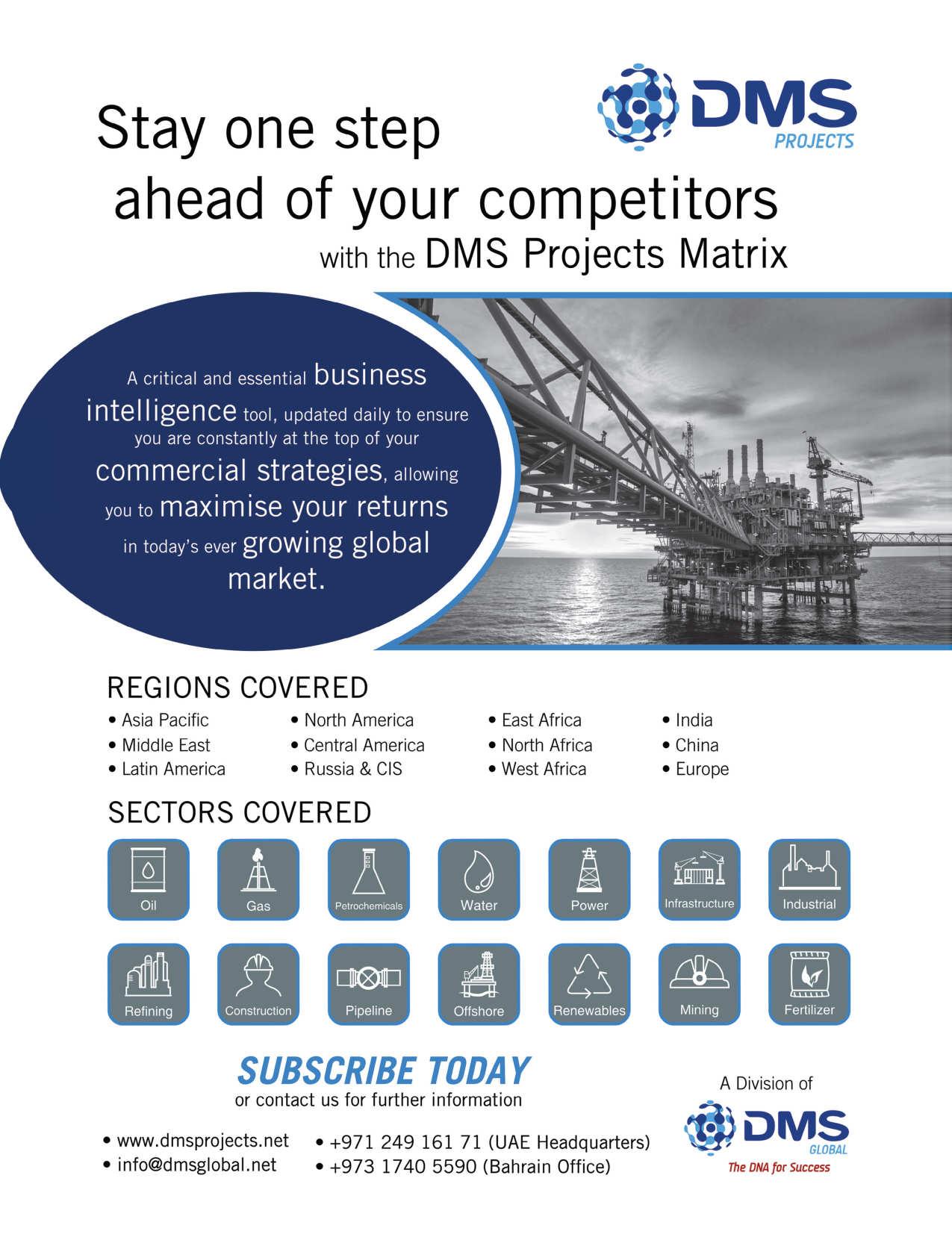
Project Name City Facility
Budget (US$) Status
Saudi Aramco - Marjan, Berri, Zuluf and
Eastern Region Oil Field, Gas Field
7,000,000,000 Construction Safaniyah Expansion - Overview
Saudi Aramco - Master Gas System Expansion (MGSE) - Overview Various Welded, Non Associated Gas 4,050,000,000 Construction
Saudi Aramco - Offshore Maintain Potential Programme - Eastern Region Oil Field, Gas Field 7,000,000,000 Construction (Scheme/Program)
Saudi Aramco - Offshore Maintain Potential Programme - Zuluf Operation & Maintenance 1,200,000,000 EPC ITB CRPO 100
Saudi Aramco - Safaniya Field Incremental Oil Production
Safaniyah Development Drilling & Production 1,000,000,000 FEED
Saudi Aramco - Safaniyah Oil Field Expansion - Overview Safaniyah Production Platform 1,500,000,000 Construction
Saudi Aramco - Unconventional Gas Program - ( Various Gas Field 7,000,000,000 Engineering & Scheme/Program) Procurement
Saudi Aramco - Unconventional Gas Program - Al Jafurah Gas Processing 10,000,000,000 Engineering & Jafurah Gas Plant - Overview Procurement
Saudi Aramco - Unconventional Gas Program - Jafurah Gas Plant - Al Jafurah Gas Processing 1,500,000,000 Engineering & Package 1 - Gas Processing Facility Procurement
Saudi Aramco - Unconventional Gas Program - Jafurah Gas Plant - Al Jafurah Gas Compression 1,000,000,000 Engineering & Procurement
Saudi Aramco - Unconventional Gas Program - Jafurah Gas Plant - Al Jafurah Offsites & Utilities 1,700,000,000 Engineering & Package 3 - Utilities and Interconnecting Facilities Procurement
Saudi Aramco - Unconventional Gas Program - South Ghawar Gas Field 2,200,000,000 Construction South Ghawar Field Development - Overview
Saudi Aramco - Uthmaniyah & Shedgum New Compression Plants
Uthmaniyah Gas Compression 2,500,000,000 FEED
Saudi Aramco - Zuluf Oilfield Expansion - Offshore Package 4 - Zuluf Development Drilling & Production 1,000,000,000 Engineering & Wellhead Topsides and Oil Tie-in Platforms Procurement
Saudi Aramco - Zuluf Oilfield Expansion - Offshore Package 5 - Zuluf Development Drilling & Production 1,000,000,000 Engineering & Wellhead Platform Topsides, Tie-in Platforms and Pipelines and Cables Procurement
Saudi Aramco - Zuluf Oilfield Expansion - Onshore Package 1 - Zuluf FPF (Field Processing Facility) 2,000,000,000 Engineering & Processing Facilities Procurement
Saudi Aramco - Zuluf Oilfield Expansion - Onshore Package 2 - Zuluf Offsites & Utilities 1,000,000,000 Engineering & Utilities, Water Treatment and Water Injection Facilities Procurement
Saudi Aramco - Zuluf Oilfield Expansion - Overview Zuluf Development Drilling & Production 9,000,000,000 Construction
INMARSAT, A LEADER in global, mobile satellite communications, has reached an agreement with offshore services provider Zamil Offshore to roll out an Internet-of-Things (IoT) solution to more than 60 vessels in the Gulf area.
The solution – powered by Fleet Connect and Fleet Data delivered through Inmarsat’s award-winning Fleet Xpress – will allow Zamil to identify, trial and select the best solutions to meet vessel performance expectations set by its charterer, Saudi Aramco. The announcement follows a successful trial on the fleet’s anchor tug, Zamil 57.

Saudi Aramco is contributing to Saudi Vision 2030, a strategic framework that aims to reduce Saudi Arabia’s dependence on oil and diversify its economy. This means Aramco needs deeper insight and control over the performance of its chartered ships.
Fleet Connect will provide the dedicated bandwidth to support vessel CCTV capabilities and other value-added services, while Fleet Data will power enhanced data analytics for efficiency and sustainability.
Scott Middleton, regional sales director, Inmarsat Maritime, said, “In addition to providing fast and reliable connectivity to improve crew welfare, Fleet Xpress enables the digital and IoT capabilities that Zamil Offshore needs to meet their needs. We are grateful to our local partner, Petroleum and Energy Trading Services Company, for its support in rolling out our endto-end solution across Zamil’s extensive and varied fleet.”
Fredrik Lang, Technical Manager, Zamil Offshore, said, “Inmarsat has been deeply involved in this project from the outset, offering us guidance and support in securing value-added services that will allow us to meet Saudi Aramco’s requirements in surveillance and performance monitoring.
“Thanks to the scalability of the IoT solution, we can add more applications and have the the opportunity to evaluate different options to establish what best meets our needs within our contract. New applications for
vessel digitalisation are surfacing constantly and we are delighted with how Fleet Xpress allows us to find the best providers without being locked in.”
The programme will also see an initial pilot of Videosoft Global’s livevideo compression and transmission services to meet Aramco’s CCTV requirements, supported over Inmarsat’s Fleet Connect dedicated bandwidth channel. Vessel performance management capabilities will be provided by VPS, using Fleet Data’s analytics capabilities to support its solution for datadriven decarbonisation, Maress. These separated channels ensure there is no interference with mission-critical bandwidth onboard.
In partnership with Zamil and Saudi Arabia’s CST – Communications, Space and Technology Commission – Inmarsat will continue to highlight the potential of IoT technology delivered via geostationary orbit satellites as a means of connecting offshore vessels to shore to enable applications such as fuel & emissions savings, condition based monitoring and remote surveys.
46 oilreview.me Issue 8 2022
Zamil operates the largest offshore fleet in the Gulf region.
Inmarsat to provde connectivity solution for Aramco chartered vessels
Image
Credit : Inmarsat





























RIG COUNT Issue 8 2022 oilreview.me 47 Middle East & North Africa The Baker Hughes Rig Count tracks industry-wide rigs engaged in drilling and related operations, which include drilling, logging, cementing, coring, well testing, waiting on weather, running casing and blowout preventer (BOP) testing. Source: Baker Hughes NOVEMBER2022VARIANCEOCTOBER2022 CountryLandOffShoreTotalFromLastMonthLandOffShoreTotal Middle East ABUDHABI 351550-1361551 DUBAI 0220022 IRAQ 55055055055 JORDAN 0000000 KUWAIT 28129028129 OMAN 49049-251051 PAKISTAN12012+111011 QATAR 5914+33811 SAUDIARABIA 651681+2651479 SUDAN2020202 SYRIA 0000000 YEMEN 202+1101 TOTAL25342295+425239291 North Africa ALGERIA 32032-32032 EGYPT 27532026632 LIBYA 808+2606 TUNISIA 2020202 TOTAL69574+266672
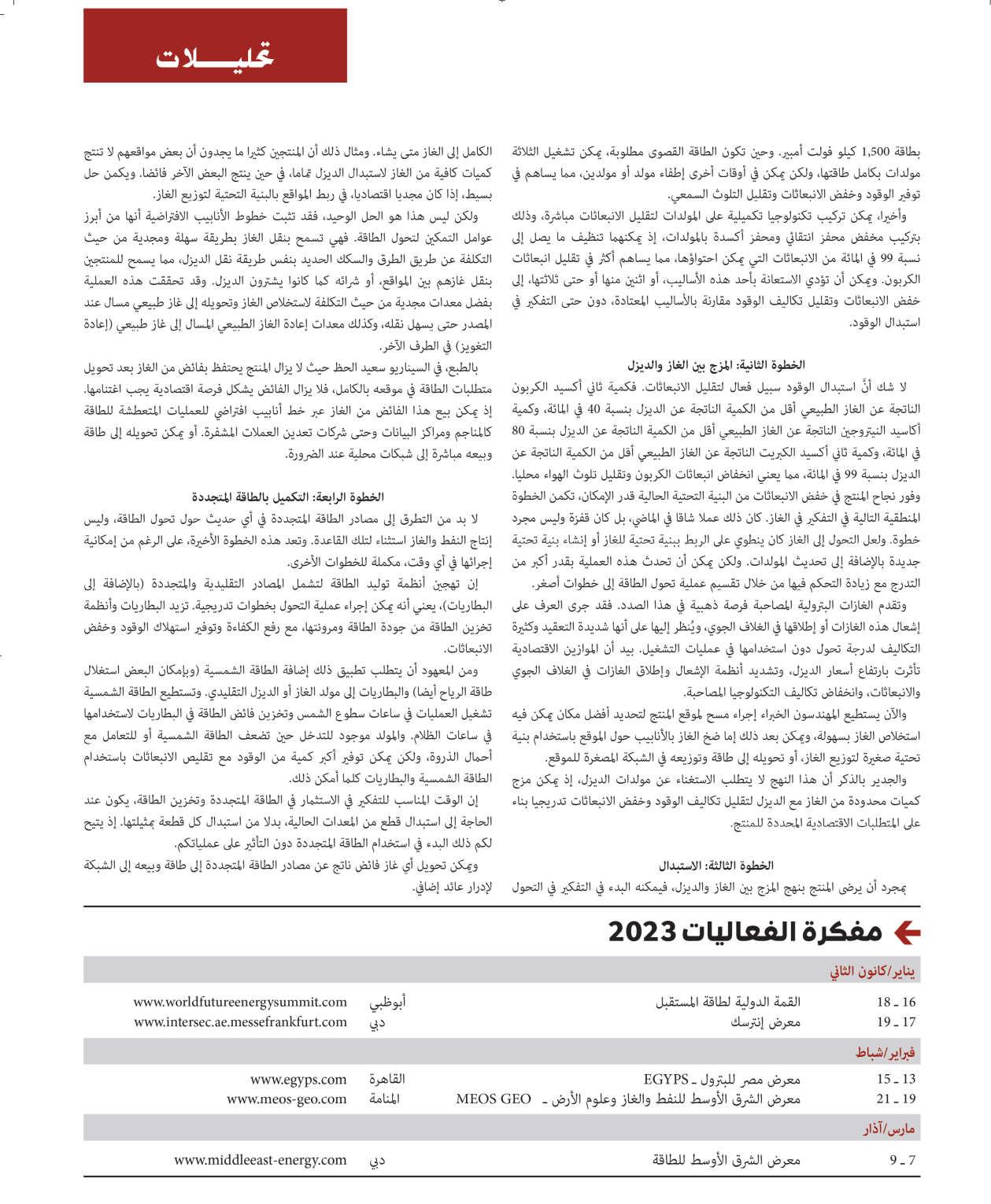
05 oilreview.me Issue 8 2022
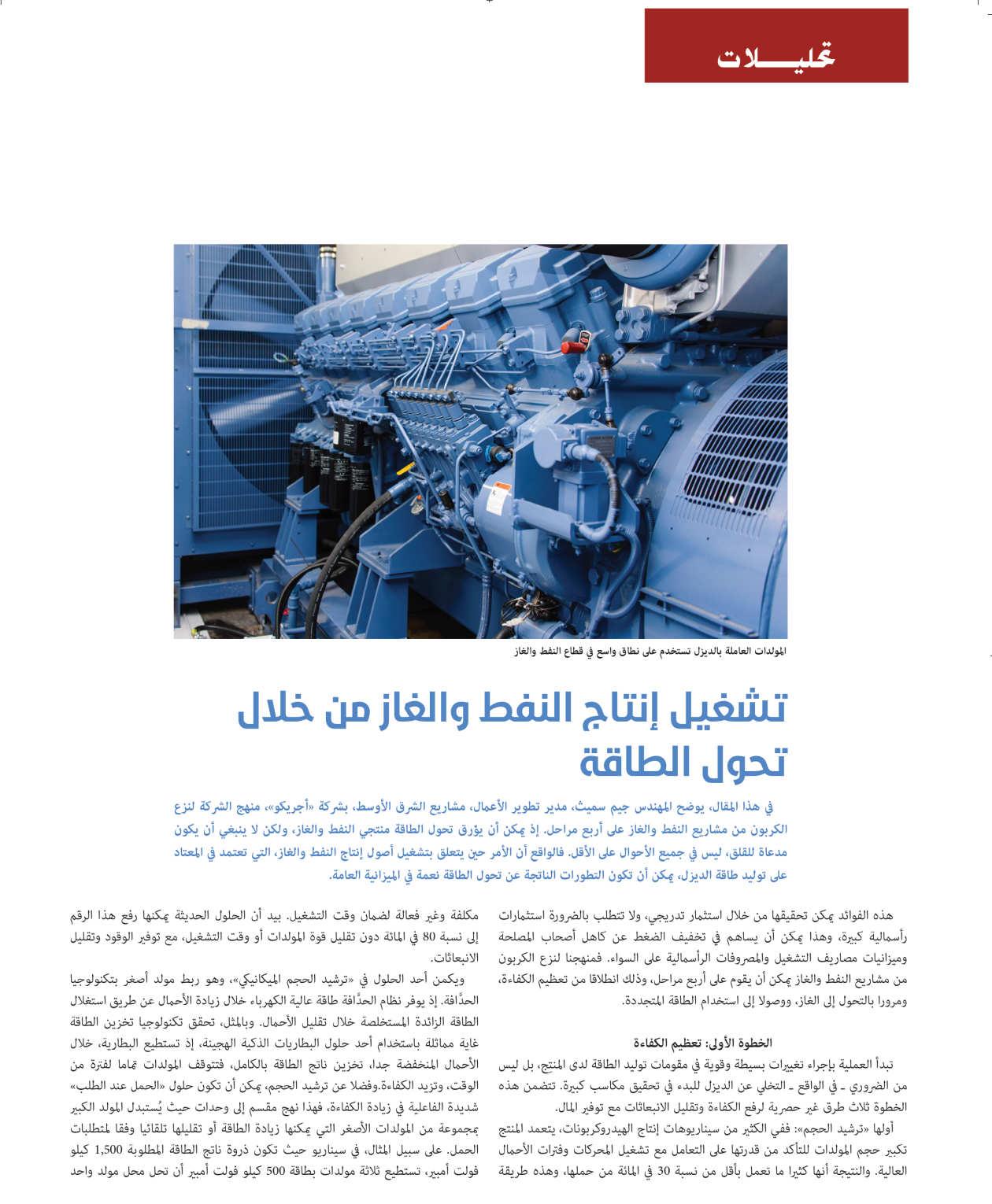
Issue 8 2022 oilreview.me 04
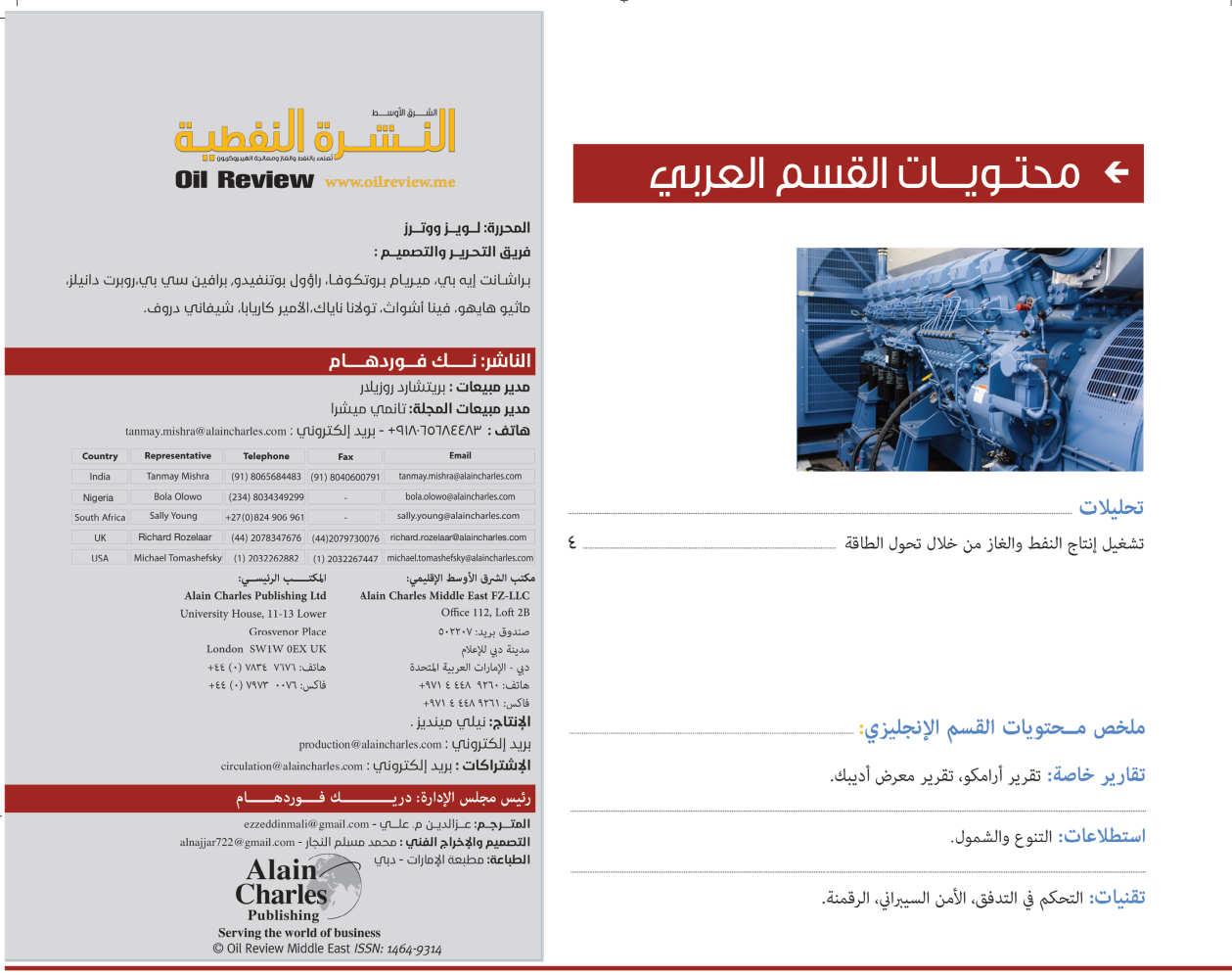
Company......................................................................................................................................................................Page Costacurta S.p.A. - VICO..............................................................................................................................................................................................................................17 DMS Global WLL............................................................................................................................................................................................................................................45 Dresser Al Rushaid Valve & Instr. Co Ltd............................................................................................................................................................................................31 Euro Gas Systems S.R.L...............................................................................................................................................................................................................................11 Liugong Dressta Machinery Sp. z o.o.......................................................................................................................................................................................................2 Messe Frankfurt Middle East GmbH......................................................................................................................................................................................................51 National Pipe Co. Ltd..................................................................................................................................................................................................................................14 Safeen Group................................................................................................................... 8,9 Stevens Supply International LLC..........................................................................................................................................................................................................21 VEGA Technique - Middle East Office....................................................................................................................................................................................................13 WEG International Trade GmbH..............................................................................................................................................................................................................19 Wilhelm Layher GmbH & Co. KG..............................................................................................................................................................................................................7 ADVERTISERS INDEX

